
Бесплатный фрагмент - Дизайн урока и планирование с нуля / Lesson Design and Planning from scratch
Technology integration
ПРЕДИСЛОВИЕ
Данная книга «Lesson Design and Planning from scratch.: A self-study reference and practice book. (Teacher Helper) Paperback»
представлена Amazon в 8 странах мира.
Автор — бывший ментор Coursera. Курс «Lesson Design and Assessment / Планирование уроков и анализ» from Университет штата Аризона.
Copyright © 2020 Marina Hrabar
All rights reserved.
Так что теперь у российских преподавателей есть отличный шанс
познакомиться с тем, что является основой того, чтобы быть
эффективным учителем стандартов 21 века.
Это творческий процесс, который позволяет нам синтезировать
наше понимание владения языком и преподавание языка с нашими знаниями наших учеников, учебной программой и контекстом обучения.
Как начать? Как включить технологии в ваш план урока? И включение технологий в учебники. Вы находитесь в нужном месте.
Практика, примеры и поддержка. Все ресурсы проекта.
Справочник для самостоятельного изучения и практическая книга. С ответами и практическими занятиями.
Lesson plans allow professors to create learning objectives, organize and deliver course content, and plan and prepare to learn activities and materials. What does it mean to be a professional teacher? The general definition of «professional’ is «one who is paid.» That distinction is more often used in the arts — a professional vocalist is paid, while an amateur is not. Be a professional teacher, share your hobby, make money. I know that you want to share your knowledge and impact the lives of people.
How to start? How to incorporate technology into your lesson plan?
And incorporating technology into textbooks. You are in the right place.
Practice, examples, and support.
All of the project resources.
A self-study reference and practice book.
With answers and Practice Labs.
Почему появилась эта книга
По этому поводу вспомнился старый одесский анекдот:
— Фима, как ты можешь быть тренером по плаванию, когда сам в жизни не умел плавать?
— Изя, я не умею плавать, я ПОНИМАЮ плавать…
Но тренер должен быть выдающимся спортсменом, и он должен знать как делать что-то из того чему он учит, плюс хорошо уметь донести до ученика, научить его — это уже риторика и педагогика. То есть он должен знать и уметь пользоваться этими знаниями.
Но есть такие люди, которые живут не своей жизнью, а чужой. Потому что своей жизнью они жить не умеют. Они все время интересуются: а как там Маша, а что Вася, а как у них там между собой? Эти люди готовы часами перемывать косточки знакомым и малознакомым людям с другими малознакомыми или хорошо знакомыми людьми, поучают других. При этом не задумываясь о собственном образовании, развитии. Бред 21 века. Модели учения, которые были адекватны сто лет назад.
Но чтобы начать думать, нужно для начала посмотреть, что происходит за окном. Человек рождается в одном мире, а уходит из жизни в совершенно другом. В течение жизни людям несколько раз приходится менять свою профессию, все время учиться чему-то новому. Например, как преподаватель английского с Шекспиром и грамматикой может обучать физиков-ядерщиков английскому? Язык — это информация и знания. Шекспир не объяснял устройство реакторов и основы физики. А Present Continious — это не теория ядерных реакторов. Это — отсутствие знаний в области преподаваемого предмета. Последствия такого обучения представить можно в реальных условиях англоязычной команды (если выживут).
И что же с подобными делать?
Учитель использует те инструменты, с помощью которых его самого учили в школе, те, которым его научили в педагогическом вузе — это если вообще научили.
Нелегко объяснить, что та педагогика была адекватна и людям, и целям, и миру, который был 50 лет назад. И что так сегодня учить человека, чтобы он был успешен через 20 лет — не получится. Поэтому и появилась эта книга.
Acknowledgments
Selfishness and greed drive people most of the time, all they see are the possible gains and ignore the negative consequences. Other scenarios have them convince themselves that they are either not doing something bad or they overestimate their own abilities and think they won’t be caught. We learn from both good and bad examples. We learn what to do from good examples and what to avoid doing from those who have made a mess of their lives. Follow the good. Learn from the bad. Bad examples help identify dead-ends. I wish to thank my toxic people. I don’t belong on the same page or even in the same library
* Images. By complying with the terms of the Creative Commons License chosen by the copyright holder you can safely use the image. Images licensed under Creative Commons are easily located. Google offers a tool to Find Creative Commons Images in Google Images
1. Writing Instructional Objectives

We can teach a lesson about Russia, but what do we want our students to be able to do
afterward?
List regions?
Label them on a map?
Describe geographical differences?
There are so many choices!
Depending on what you want students to be able to DO at the end of a lesson, it will help us choose the right action verb for writing an instructional objective.
Instructional objectives often will depend on the overall curriculum plan and the level of the learners, but it also involves the teacher’s influence in designing a lesson.
Are you fed up with using the same old methods to introduce your lesson topic?
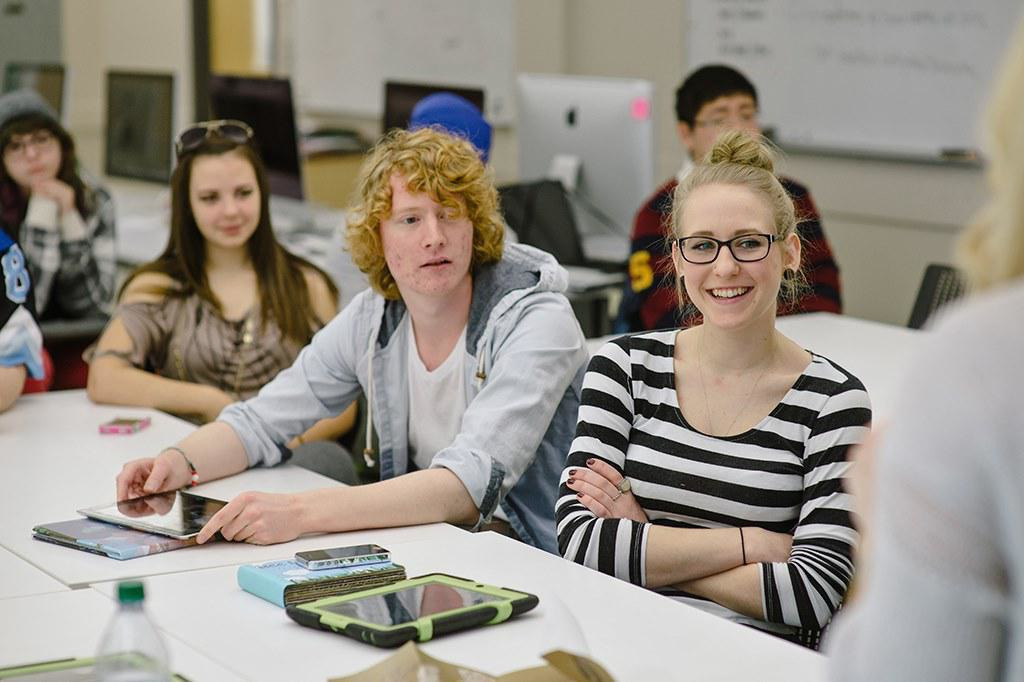
Do you ever have trouble writing learning objectives for your lessons? Often we know what we want our students to learn, but more importantly, we need to decide what we want our students to be able to do after a particular lesson or class.
The ABCD method of writing objectives is an excellent way to structure instructional objectives. In this method, «A» is for the audience, «B» is for behavior, «C» for conditions, and «D» is for the degree of mastery needed.
Example: -«Given a sentence written in the past or present tense, the student will be able to re-write the sentence in future tense with no errors in tense or tense contradiction (i.e., I will see her yesterday.).» The key here is to use verbs that indicate a clearly observable and measurable action. Appropriate action verbs for the cognitive, affective, and psychomotor domains are listed below.
Bloom’s Taxonomy of the Cognitive Domain Bloom’s taxonomy of cognitive learning, originated by Benjamin Bloom and collaborators in the 1950s, describes several categories of cognitive learning.
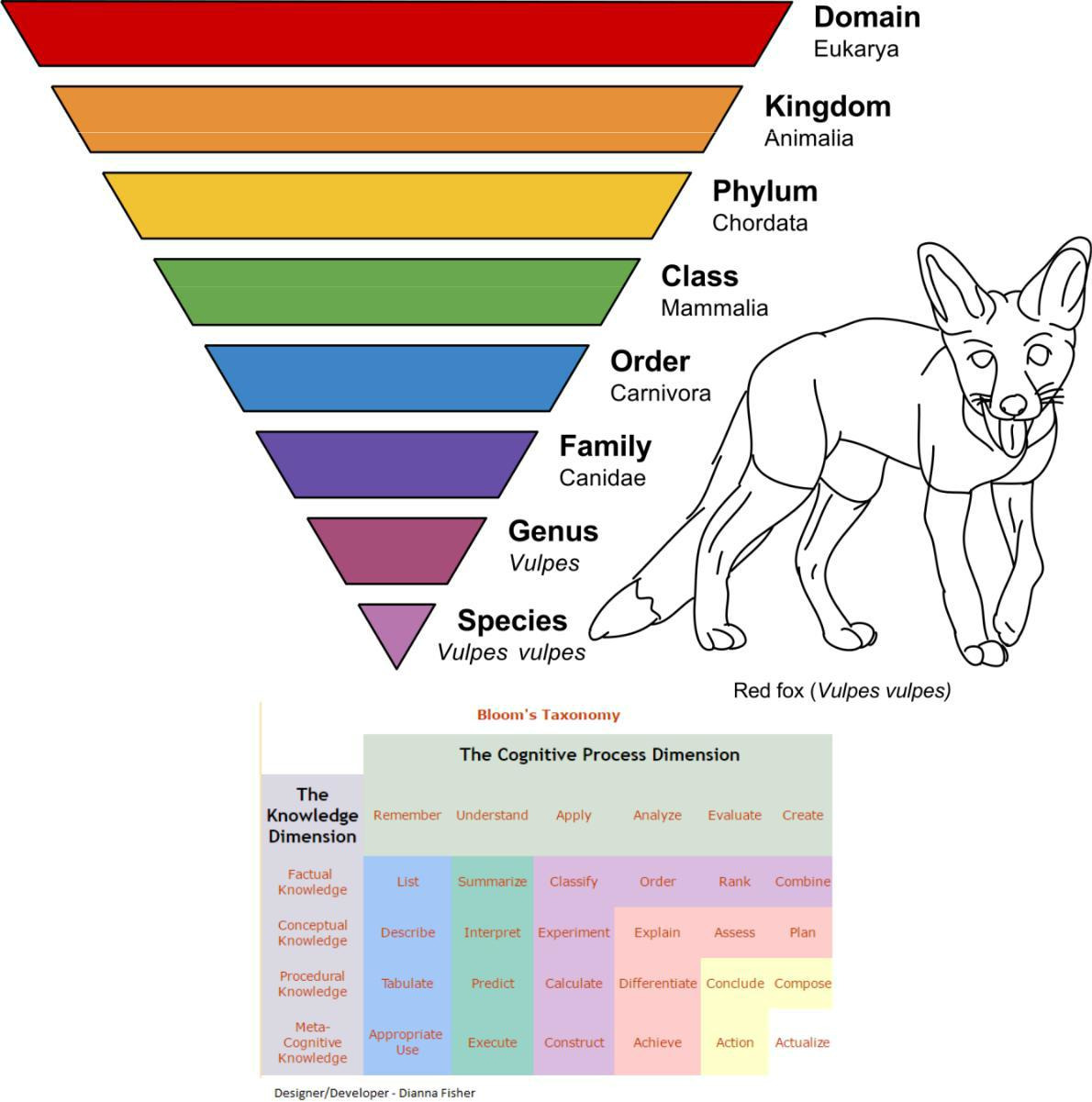
This taxonomy was revised in 2001 by Anderson and Krathwohl to change the category names from nouns to verbs, and to switch the Evaluation and Synthesis levels in the hierarchy.
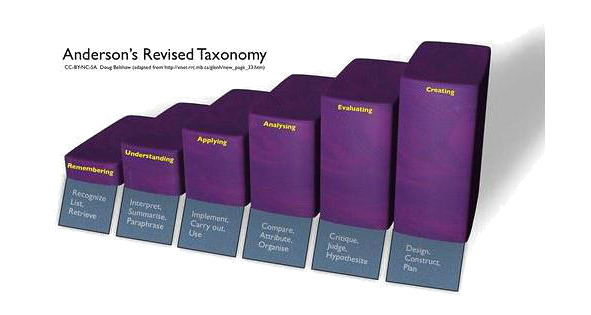
Many people also call the analysis, synthesis/create, and evaluation categories «problem-solving.»
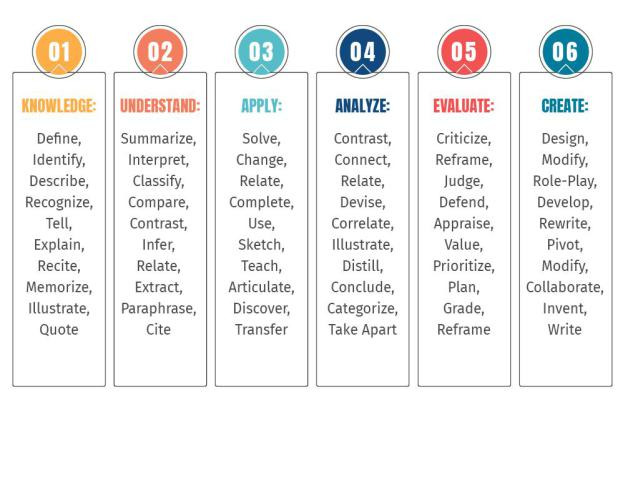
ACTION VERBS APPROPRIATE FOR EACH LEVEL OF
BLOOM’S/ANDERSON & KRATHWOHL’S TAXONOMY (Cognitive
Domain)
Remember: Define Identify List Name Recall Recognize Record Relate Repeat Underline
Understand: Choose Cite examples of Demonstrate use of Describe Determine
Differentiate between Discriminate Discuss Explain Express Give in own words Identify
Interpret Locate Pick Report Restate Review Recognize Select Tell Translate Respond
Practice Simulates
Apply: Apply Demonstrate Dramatize Employ Generalize Illustrate
Interpret Operate Operationalize Practice Relate Schedule Shop Use Utilize Initiate
Analyze: Analyze Appraise Calculate Categorize Compare Conclude Contrast Correlate Criticize
Deduce Debate Detect Determine Develop Diagram Differentiate Distinguish Draw
conclusions Estimate Evaluate Examine Experiment Identify Infer Inspect Inventory Predict
Question Relate Solve Test Diagnose
Evaluate: Appraise Assess Choose Compare Critique Estimate Evaluate Judge Measure Rate Revise Score Select Validate Value
— Lesson Design and Planning from scratch
— Create: Arrange Assemble Collect Compose Construct Create Design Develop Formulate Manage Modify Organize Plan Prepare Produce Propose Predict Reconstruct Set-up Synthesize Systematize Devise
Krathwohl and Bloom’s Taxonomy of the Affective Domain Krathwohl and Bloom’s 1964 taxonomy of the affective domain describes several categories of affective learning.
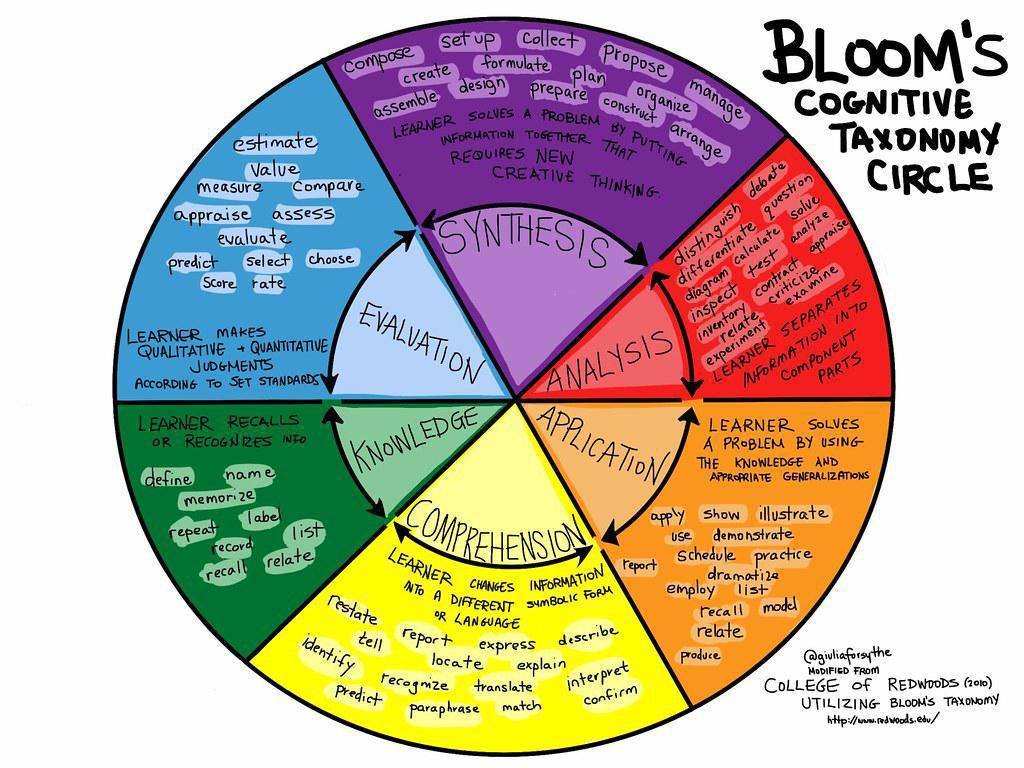
AFFECTIVE TAXONOMY Level Definition
Example
Receiving Being aware of or attending to something in the environment. Individual reads a book passage about civil rights. Responding Showing some new behaviors as a result of experience. Individual answers questions about the book, read another book by the same author, another book about civil rights, etc. Valuing Showing some definite involvement or commitment. The individual demonstrates this by voluntarily attending a lecture on civil rights. Organization Integrating a new value into one’s general set of values, giving it some ranking among one’s general priorities. The individual arranges a civil rights rally.
Characterization by Value Acting consistently with the new value. The individual is firmly committed to the value, perhaps becoming a civil rights leader
ACTION VERBS APPROPRIATE FOR EACH LEVEL OF KRATHWOHL & BLOOM’S TAXONOMY (Affective Domain)
Receiving Accept Attend Develop Recognize Responding Complete Comply Cooperate Discuss Examine Obey Respond Valuing Accept Defend Devote Pursue Seek Organization Codify Discriminate Display Order Organize Systematize Weigh Characterization by Value Internalize Verify
Psychomotor Domain The following is a synthesis of the taxonomies of Simpson (1972), Dave (1970), and Harrow (1972).
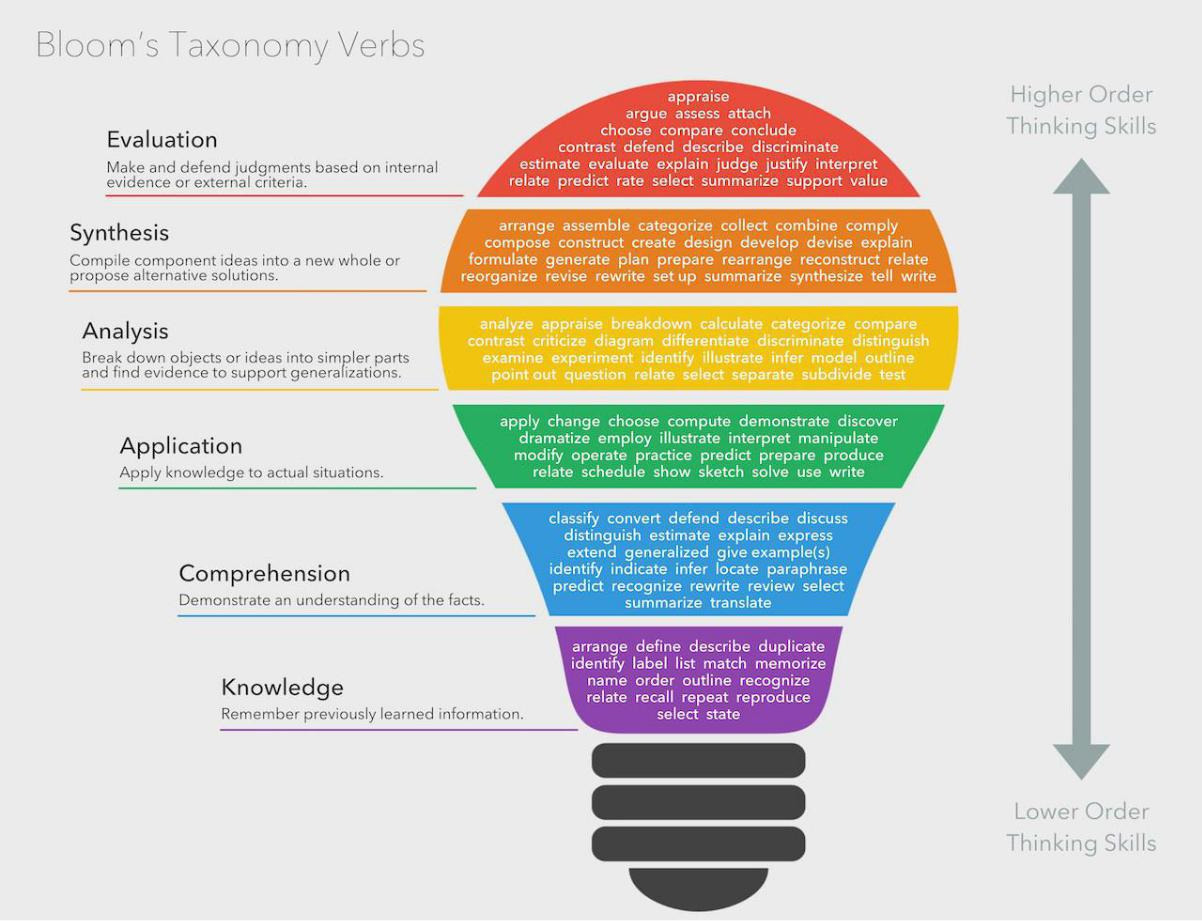
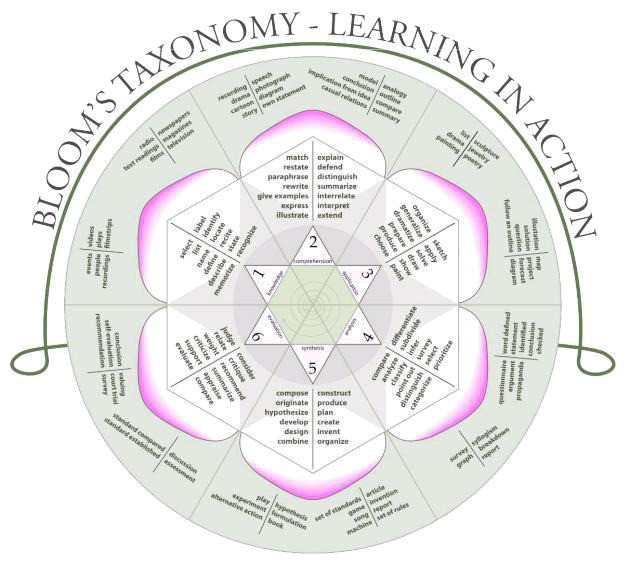
ACTION VERBS APPROPRIATE FOR THE PSYCHOMOTOR TAXONOMY Bend Calibrates Constructs Differentiate (by touch) Dismantles Displays Fastens Fixes Grasp Grinds Handle Heats Manipulates Measures Mends Mixes Operate Organizes Perform (skillfully) Reach Relax Shorten Sketches Stretch Write
— PSYCHOMOTOR TAXONOMY Level Definition Example Observing Active mental attending of a physical event.
— The learner watches a more experienced person. Other mental activity, such as reading may be a pert of the observation process.
— Imitating Attempted copying of a physical behavior. The first steps in learning a skill. The learner is observed and given direction and feedback on performance.
— Movement is not automatic or smooth.
— Practicing Trying a specific physical activity over and over. The skill is repeated over and over. The entire sequence is performed repeatedly.
— Movement is moving towards becoming automatic and smooth.
— Adapting Fine-tuning.
— Making minor adjustments in physical activity in order to perfect it. The skill is perfected.
Topics to Get Your Students Talking — And Topics to Avoid

You might not believe how many things there are to say about food, but you’ll be surprised. You can discuss their favorite and least favorite food (for lower-level classes), what they have and haven’t tried, the strangest thing they’ve tried, and what they can cook

1 — Food
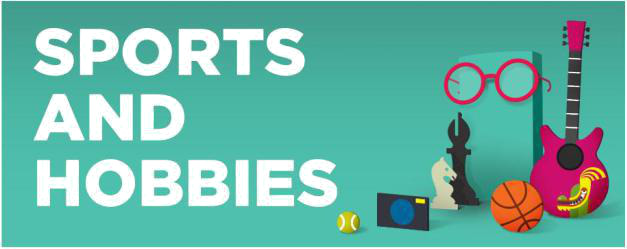
2 — Hobbies
Openly asking what your students do in their free time and what they’re interested in will give you cues about what to discuss — some might be really interested in history, while others like designing cute lunch boxes. Even if their hobby isn’t that interesting to you, ask a lot of questions about it and use it to lead into other topics.
Bringing out your phone from back home might be enough to spark a conversation about phones, apps, games etc, perhaps comparing features in your phones or other pieces of technology
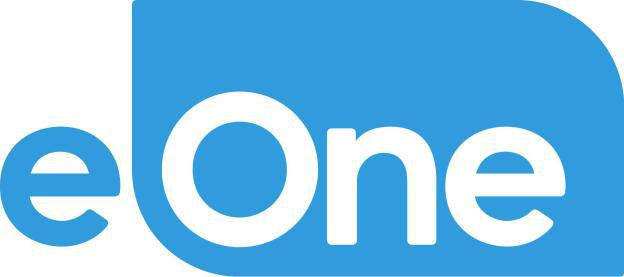
3 — Entertainment
Ask students what music, sports, TV shows or films they like — this can work with everyone, from small children to older adults. Getting them to explain the storyline of a movie can be a fun challenge for more advanced students.
If your students are slow to start talking, inspire them with some of your own photos

4 — Travel
Challenge their English by getting them to describe what they see in the pictures, and let them guess where it is. Some students will warm up by asking you questions about your travels, and in turn, you can ask about where they have traveled to, or where they’d like to go. Some students learning English are very passionate about traveling and can regale you with their stories.
Topics to Avoid
Their Opinions
Although you will find students who want to discuss their opinions — many find the
Western openness to debate refreshing and seek it out — nothing will bring uncomfortable silence like pushing a student for their opinion (especially in a group).

5 — Their Opinions
Too Much About Your Country
Although you will find students who want to discuss their opinions — many find the Western openness to debate refreshing and seek it out — nothing will bring uncomfortable silence like pushing a student for their opinion (especially in a group).

6 — Too Much About Your Country
Meaning anything that compares your learners` home country to your country and seems like you are extolling the superiority of your own country, e.g. «Well, in… people aren’t afraid to express their opinions…» Some students will be very interested in your country and will ask you questions about it; by all means, talk about it then, but remember that people can get pretty defensive if you suggest that your country is somehow better than their in any way!
Many of your students will ask you questions that seem pretty rude — «How old are you?» «Do you have a boyfriend?» or even «How much do you weigh?»

7 — Their Personal Lives
However, if you try to delve too much into your students’ personal lives, they might close up and feel uncomfortable. This completely depends on the students — some told me all about their marital problems, while others didn’t want to discuss a thing. Don’t push it, but if it comes up naturally, that’s fine!
It’s probably quite obvious, but discussing salaries and how much things cost can seem a little crude, and make some students feel uncomfortable

8 — Money
If your students happen to be economists of some kind, it’s different — you can happily chat about banking and economics for hours.
Of course, every student will have different topics that they like and dislike, but the general rule for starting out is — keep it trivial and light!

Your lessons should be light-hearted and fun, not heavy and serious. As you get to know your students, you’ll get a better idea of how to get them to talk!
Select Appropriate Materials for your Learners
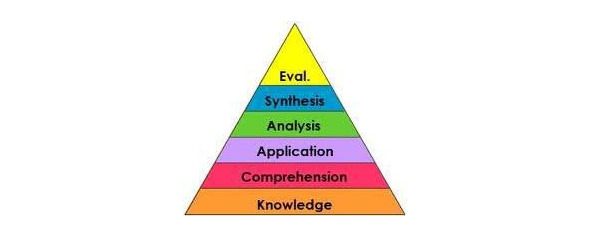
Authentic-based materials as the materials which are prepared for native speakers and not designed to be used for teaching purposes.
Authentic-based materials can be motivating because they are proof that the language is used for the real-life purpose by real people. The difference is not in the language materials themselves but rather on their outcomes and their effectiveness. What is the age of the students you are planning this material for? Describe your students’ language proficiency. List the title and author. Discuss why you think this material would be appropriate for your learners.
How to Find Reading and Interest Levels for Books

Lists reading levels and interest levels of books in the AR program. Can search by keyword to find books on a topic.«Collections» tab lists awards list by state and category.

Like a paper library, they provide free access to researchers, historians, scholars, the print disabled, and the general public. Their mission is to provide Universal Access to All Knowledge.
Shift your perspective Join TED Recommends

TED is a nonpartisan nonprofit devoted to spreading ideas, usually in the form of short, powerful talks. TED began in 1984 as a conference where Technology, Entertainment and Design converged, and today covers almost all topics — from science to business to global issues — in more than 110 languages.

FUN SCIENCE, TECHNOLOGY, ENGINEERING, AND MATH ACTIVITIES!
Lesson Improvement Tips

1) Think Outside (No Box Required)

Try exploring the ways animals adapt to winter, learning about air pressure, or creating a comet. Learning outside can involve the senses in ways the classroom doesn’t, lending itself well to creative forms of expression suited for art, literature or English classes as well.
2) Start at the Test (And Work Your Way Back)
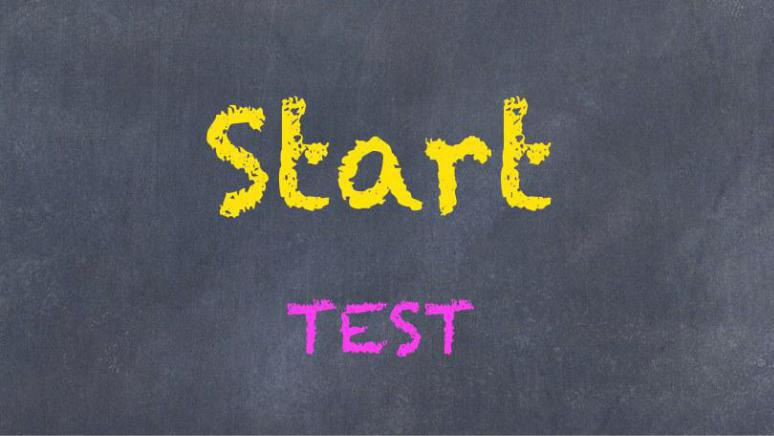
Staying on target with your objectives throughout the year is typically based on how you’re able to bring learning outcomes together along the way. In a list of assessment writing tips compiled by Brown University, researchers cited the importance of assessments as part of the learning process. Knowing ahead of time how you plan to assess students on a given topic can be an incredibly valuable tool in lesson planning. For your students, it may be the «end» of the process, but for you, it’s the starting point and can help create an effective outline of talking points throughout your lesson plan to ensure nothing is missed along the way.
3) Keep the Bigger Picture in Mind

Sometimes it takes getting back to basics to head in the right direction. That means focusing on what you need to accomplish in the long-term, learning from experiences along the way, and staying focused throughout.
It’s important to remember each piece of the puzzle is created differently on purpose. Just as each student will bring a unique perspective to the larger group, each lesson plan is a necessary element of the end goal. Sometimes things will work, other times they won’t. Some lessons will run smoothly and others will flop. But the ability to stay focused on the piece that plays in the bigger picture at the end of the school year will increase the productivity and effectiveness of the entire process.
The components of a well-constructed lesson plan may vary slightly from one topic to another, but each should include a warm-up activity, introduction, practice activity, production, and review. An article in Busy Teacher walks through some suggested steps of writing a lesson plan, focusing on how each step comes together over the course of a school day, and how each school day comes together over the course of a school year.
It’s best to help get students in the right frame of mind, to begin with, and start by helping them understand what it is they will be learning. Practice and production are also key and should involve work on the student’s part to learn more about the topic. And a review is necessary to bring everything full circle in a way that not only stays with the students but also could be replicated by another teacher someday.
4) Stay Flexible

This may seem to contradict the previous insights of this article, but it is just as important as everything else. Making adjustments as you go is a necessary component to proper lesson plan execution. This will obviously depend greatly on the makeup of students, their personalities, their learning styles, and how each of those things comes together into the overall classroom environment. The best place to start is in knowing each individual so you are equipped to anticipate some of the necessary changes instead of reacting to them at the moment. That could involve stepping outside your comfort zone by trying a new activity for something you’ve taught the same way multiple years in a row. Other teachers are a great place to start, but there are also so many resources onlinefor any grade level and subject area. Sometimes being flexible in the classroom means stepping outside your comfort zone to accomplish what’s best for the students.
5) What Would You Do?

Put yourself in your students’ shoes. What were you curious about when you were their age? What questions did you have about a topic? What interests you most? What do you still want to know? All of these questions are excellent things to ask yourself if you end up in a lesson planning block.
Classrooms have obviously changed in some pretty fundamental ways since most of us were in school, but that doesn’t take away from the basics of imagination, creativity and a thirst for learning. One way to embrace a changing environment is to find new ways to integrate technology into your lesson plans. There are several things to consider when evaluating Edtech in the classroom, but it’s a best practice to keep an open mind to trying something new as often as you’re comfortable.
Start your projects. Practice Lab 1
Project 1. Reading/Writing Lesson
Project 2. Listening/ Speaking Lesson
Project 3. Course, Teacher`s Book. But Set your own goals for your learners
Project 4. Stem Lesson
Build affordable inquiry and project-based activities to visualize data across science, technology, engineering, and math (STEM) curriculum.
Questions.

Reading
What is the age of the students you are planning this reading for?
Describe your students’ language proficiency.
Discuss why you think this reading would be appropriate for your learners.
Listening

What is the age of the students you are planning this course?
Describe your students’ language proficiency.
Discuss why you think this video would be appropriate for your learners.
What I learned…
What I found surprising…
How my thinking changed…
Your course

What is the age of the students you are planning this course?
Describe your students’ proficiency.
List the title.
Discuss why you think this course would be appropriate for your learners.
STEM

What is the age of the students you are planning this course?
Describe your students’ language proficiency.
List the title
Discuss why you think this STEM Lesson/ Course would be appropriate for your learners.
Common Questions

Unit Goals: What broad goals or essential questions are driving this unit? Learning
Objective (s): What will students know and be able to do by the end of class that they didn’t know or couldn’t do when they came in? The Set-up Materials: What do you need on hand for the lesson? How will the room be set up?
Is your learning objective worthwhile? √ Does it advance the Unit Goals? √ Have you explicitly considered content, skill, and language pre-requisites and objectives? √ Why are you teaching this objective, in this way, at this time, to these students? Time The Hook: How will you pique students’ interest? Exploration: How will students explore the new concepts?
Start your Projects
Lesson Plan. Reading/Writing Lesson
Business/Materials
https://www.moralstories.org/keep-
your-dream/Keep Your Dream.
Welcome Reader
— A projector
— A Smart Board
— Computers with internet access
My Sample 1
Lesson Objectives
— Students will be able to define vocabulary words,
identify the main characters, describe the scenes and setting.
— Students will be able to explore
a dream ambition.
— Students will be able to write imaginatively, creatively and thoughtfully, producing texts that interest and engage the reader.
— Students will be able to generate and harness new ideas and develop them in their writing.
My important theme is dreaming. Developing Myself
Lesson Objectives
— Students will be able to define vocabulary words,
identify the main characters, describe the scenes and setting.
— Students will be able to explore a dream ambition.
— Students will be able to write imaginatively, creatively and thoughtfully, producing texts that interest and engage the reader.
— Students will be able to generate and harness new ideas and develop them in their writing.
What is the age of the students you are planning this reading for?
14+
Describe your students’ language proficiency.
Intermediate (Reading skills including focusing on topic sentences plus using context to work out the meaning of unknown words. Follow on activities include thinking of ways to search for eternal youth).
Make associations between new information and their prior knowledge, use new information to clarify or modify their prior knowledge, read and listen between lines, relate new concepts to their own lives, to their experiences, knowledge, beliefs and feelings. Create a mental, oral and written summary of information.
List the title and author of the reading.
Keep Your Dream. Welcome Reader https://www.moralstories.org/keep-your-dream/
Discuss why you think this reading would be appropriate for your learners.
Dreams are very important in life. They motivate, inspire, improve and help you in achieving any goal that you want to achieve.
Lesson Plan. Listening/ Speaking Lesson
My Sample 2
Business/Materials
https://www.moralstories.org/keep-
your-dream/Keep Your Dream.
Welcome Reader
— A projector
— A Smart Board
— Computers with internet access
Lesson Objectives
— Students will be able to define vocabulary words, identify the main characters, describe the scenes and setting.
— Students will be able to explore a dream ambition.
— Students will be able to write imaginatively, creatively and thoughtfully, producing texts that interest and engage the reader.
— Students will be able to generate and harness new ideas and develop them in their writing.
My Topic: Exploring Social Issues
Lesson Objectives
The students will be able to:
— use appropriate words and phrases to demonstrate their understanding of a social issue;
— listen for specific information;
— apply listening and encoding (spelling) skills
What is the age of the students you are planning this course?
14+
Describe your students’ language proficiency.
Intermediate
List the title.
Air Quality Concerns Close Schools, Colleges
https://www.youtube.com/watch?v=Mter5lTxT2o
Discuss why you think this video would be appropriate for your learners.
Students reflect on what they have learnt about air pollution
What I learned…
What I found surprising…
How my thinking changed…
Lesson Plan. Teacher`s `book “_Business Result Advanced — OUP — Oxford University Press___ (10) _____________»
My Sample 3

Teacher`s `book «Business Result Advanced — OUP — Oxford University Press (10)»
Lesson Objectives
Students will be able to:
— create a personal vision statement that reflects the students personal traits and core values.
— set SMART goals that are specific, measurable, attainable, and realistic.
— write an action plan for achieving their goals
What is the age of the students you are planning this course?
for pre-work and in-work professional students
Describe your students’ language proficiency.
Advanced (C1-C2)
List the title.
Business Result Advanced
A business English course for pre-work and in-work professional students.
Kate Baade, Michael Duckworth, David Grant, Christopher Holloway, Jane Hudson, John Hughes,
Jon Naunton, Jim Scrivener, Rebecca Turner and Penny McLarty
Business Result is a six-level business English course that gives students the communication skills
they need for immediate use at work.
НМК: Business Result
Discuss why you think this course would be appropriate for your learners.
Business Result helps those who need to communicate better in English at work, by teaching a
range of business communication skills.
The course features video clips for every unit, including documentary clips, authentic interviews
and dramatized scenarios showcasing business communication skills.
The Interactive Workbook on the DVD-ROM is also available online. It enables you to offer blended or distance learning courses, and allows you to communicate with your students outside class.
Lesson Plan. STEM Lesson __ Addressing Social Issues through Art ________________________
My Sample 4

Lesson Plan. STEM Lesson
«Addressing Social Issues through Art»
Lesson Objectives
Students will be able to:
— research the traits of artists and the purpose of their non-profit endeavors;
— compare and contrast findings, within small groups, discussing professional skill sets required to support these non-profits;
— create a list of outlandish ideas for potential non-profit
What is the age of the students you are planning this course?
16+
Describe your students’ language proficiency.
Advanced (C1-C2)
List the title.
English-Language Arts
History/Social Science
Visual Arts & Performing Arts
English Language Development
Discuss why you think this STEM Lesson would be appropriate for your learners.
What social issues motivate students within their community? The purpose of this lesson is for Individual students to develop a Project where they design a nonprofit business plan using their art major to facilitate their organization’s mission.
Reading/Writing Lesson

My Sample 1
Dreaming. Developing Myself

What is the age of the students you are planning
this lesson?
Describe your students’ language proficiency.
14+
Intermediate Reading skills including a focus on topic sentences plus using context to work out the meaning of
unknown words. Follow on activities include thinking of ways to search for eternal youth). Make associations between new information and their prior knowledge, use new information to clarify or modify their prior knowledge, read and listen between lines, relate new concepts



Dreams are very important in life. motivate, inspire, improve and help achieving any goal that you want to
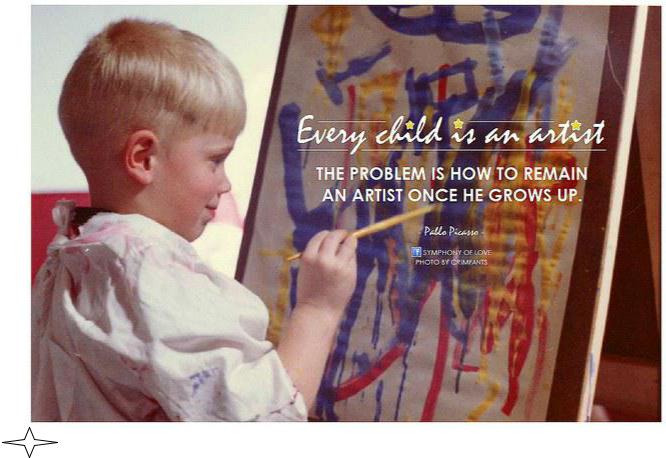
I have a friend named Monty Roberts who owns a horse ranch in San Isidro. He had let me use his horse ranch to put on fund-raising events to raise money for youth at risk programs.
The last time I was there he introduced me by saying, «I want to tell you why I let you use my horse ranch. It all goes back to a story about a young man who was the son of an itinerant horse trainer who would go from stable to stable, race track to race track, farm to farm and ranch to ranch, training horses. As a result, the boy’s high school career was continually interrupted. When he was a senior, he was asked to write a paper about what he wanted to be and do when he grew up.»
«That night he wrote a seven-page paper describing his goal of someday owning a horse ranch. He wrote about his dream in great detail and he even drew a diagram of a 200-acre ranch, showing the location of all the buildings, the stables, and the track. Then he drew a detailed floor plan for a 4,000-square-foot house that would sit on a 200-acre dream ranch.»



Lesson Objectives
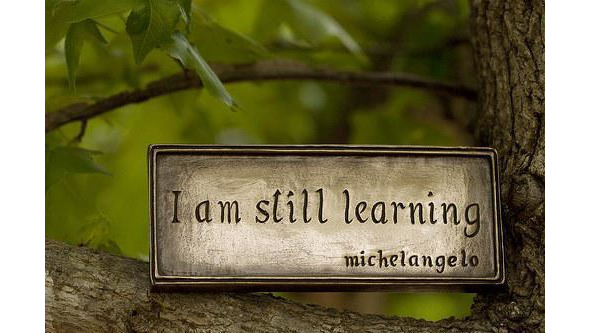
— Students will be able to define vocabulary words,
identify the main characters, describe the scenes and setting.
— Students will be able to explore a dream ambition.
— Students will be able to write imaginatively, creatively and thoughtfully, producing texts that interest and engage the reader.
— Students will be able to generate and harness new ideas and develop them in their writing.
Action verbs based on each level of understanding.
How I will assess MY student’s mastery of the objective.
the Bloom’s level
— Remember Define
IDENTIFY
2. Understand
EXPLORE = Observe
3. Apply
WRITE IMAGINATIVELY =USE
— Analyze PRODUCE = Conclusion
— Evaluate GENERATE
— Create DEVELOP IN WRITING

Business/Materials

Handing over and
professional performance
— https://www.moralstories.org/keep-your-dream/Keep Your Dream. Welcome Reader
— A projector
— A Smart Board
— Computers with internet access

A teacher’s planning of the tasks to be presented, resources

Listening/ Speaking
Lesson
My Sample 2
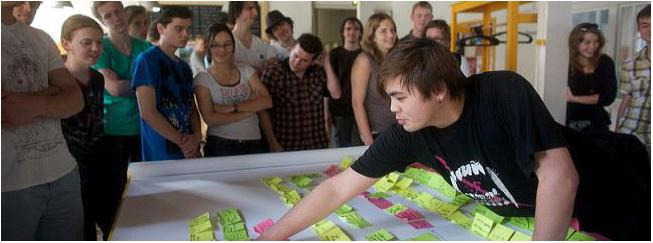
Exploring Social Issues
14+
Intermediate
Air Quality Concerns Close Schools, Colleges https://www.youtube.com/watch?v=Mter5lTxT2o
Students reflect on what they have learned about air pollution

What I found
surprising…
How my thinking changed…
What is the age of the students you are

planning this lesson? Describe your student language proficiency.
1 — Air Quality Concerns Close Schools, Colleges
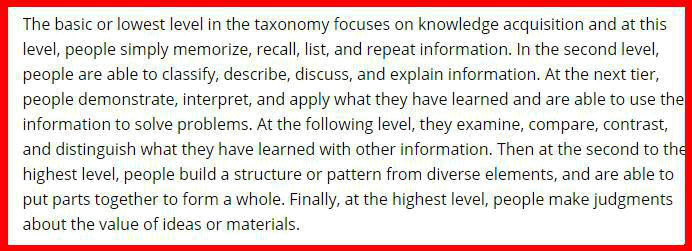
Lesson Objectives
Students will be able to:
— use appropriate words and phrases to demonstrate their understanding of a social issue;
— listen for specific information;
— apply listening and encoding (spelling) skills
Knowledge
use (appropriate words and phrases)
APPLICATION
listen for specific information
EVALUATION
apply listening and encoding skills = Interpret
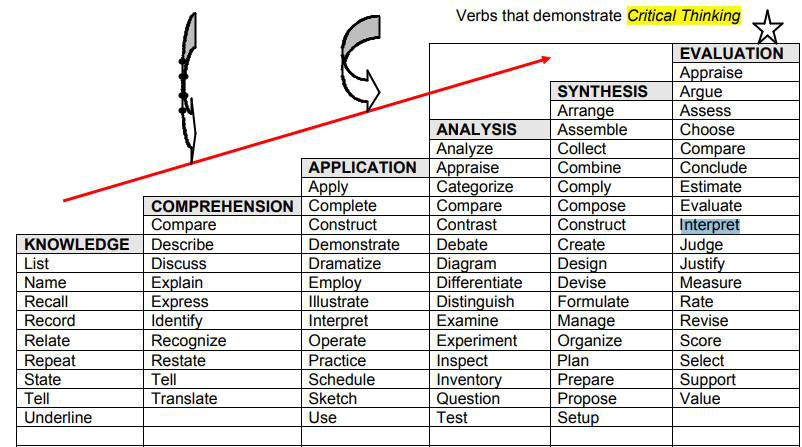
Business/Materials
How long is the video?
Is there anything about the content that may not be appropriate for children?
Is it good quality video or does it end abruptly for no apparent reason?

— https://www.youtube.com/watch?v=Mter5lTxT2 oAir Quality
Concerns Close Schools, Colleges. Video
Authentic material
With or Without Subtitles (level of my students)
— A projector
Do you have everything

The rule of thumb is to
keep most videos under
two minutes
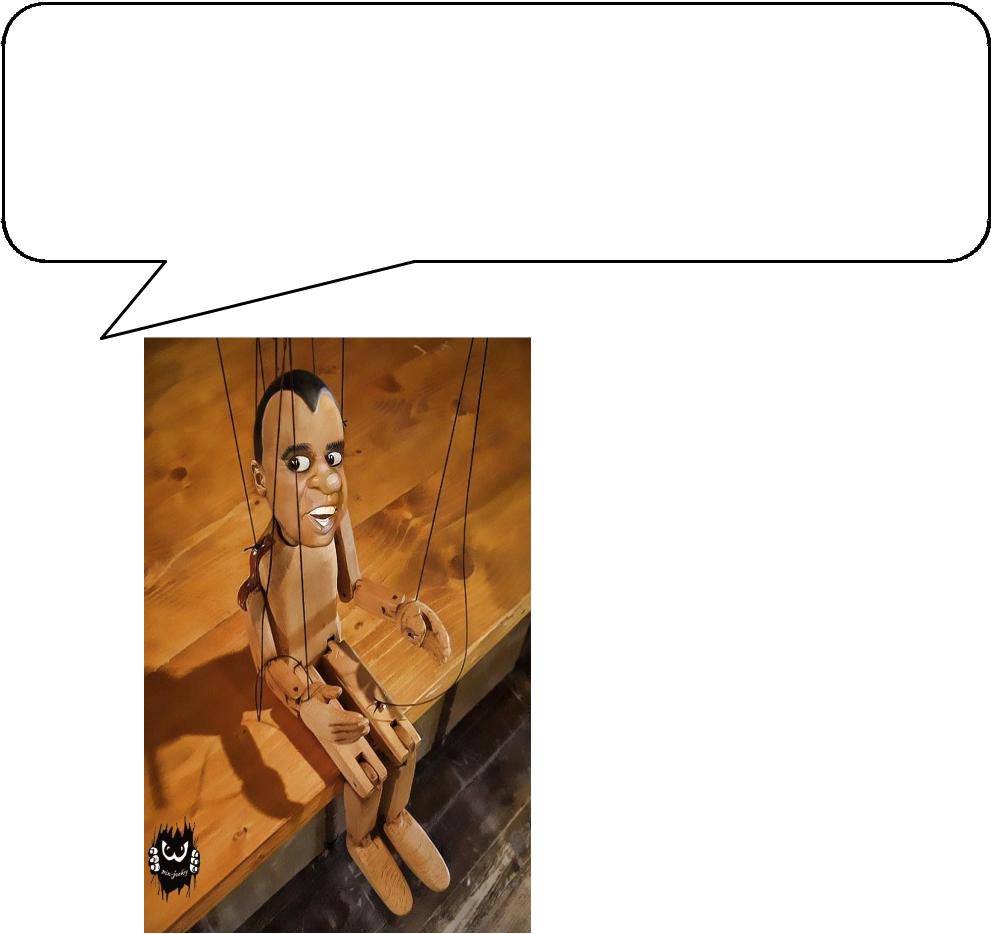
My Sample 3. Course, Teacher`s Book. But
Set your own goals for your learners
Business Result Advanced — OUP
— Oxford University Press (10)
For pre-work and in-work professional students Advanced (C1-C2)
What is the age of the students you are planning this course?

Describe your students’
proficiency.

List the title.
Discuss why you think this course would be appropriate for your learners.
Business Result Advanced
A business English course for pre-work and in-work professional students.
Kate Baade, Michael Duckworth, David Grant, Christopher Holloway, Jane Hudson, John Hughes, Jon Naunton, Jim Scrivener, Rebecca Turner, and Penny McLarty
Business Result is a six-level business English course that gives students the communication skills they need for immediate use at work.
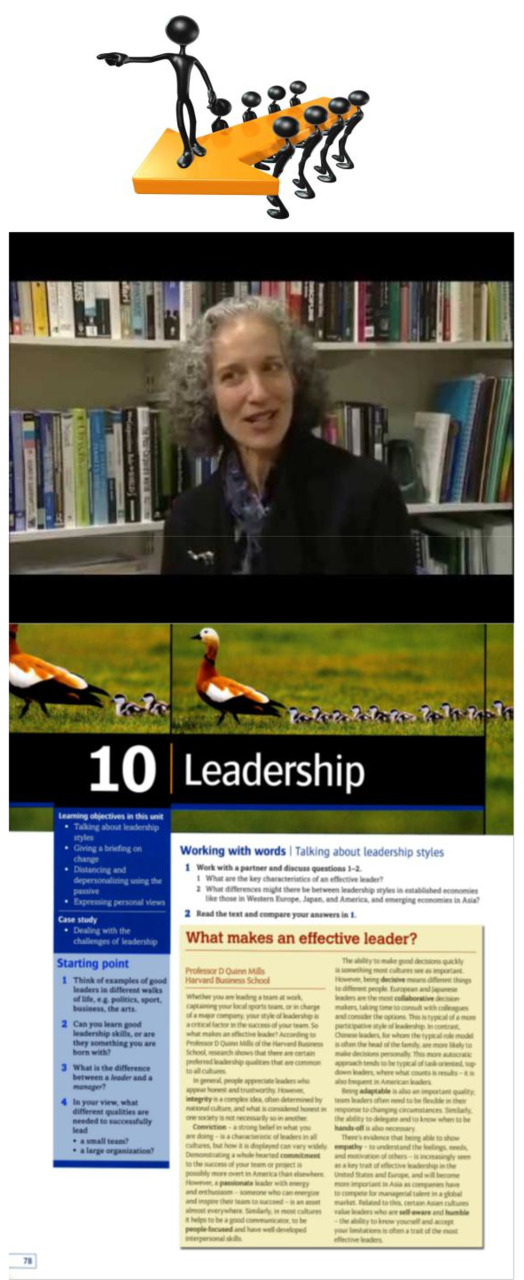
Leadership
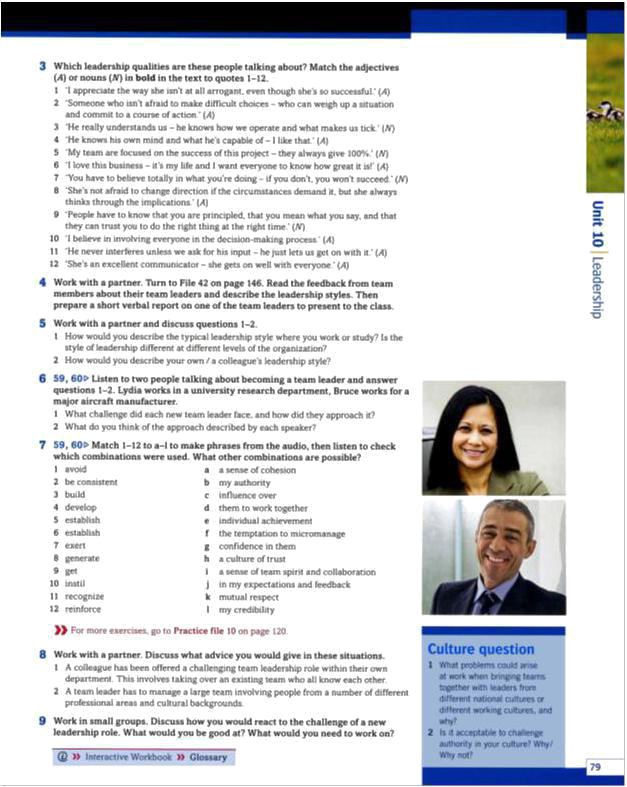
Lesson Objectives
Students will be able to:
— create a personal vision statement that reflects the student’s personality traits and core values.
— set SMART goals that are specific, measurable, attainable, and realistic.
— write an action plan for achieving their goals
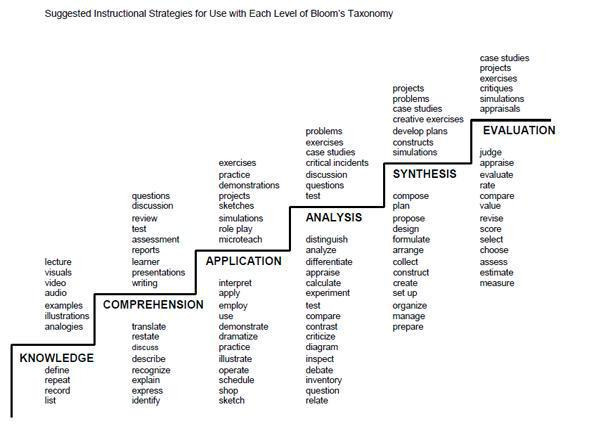
Synthesis
create
Evaluation
set smart goals = Summarize
write an action plan = Choose
Business/Materials
Business Result Advanced, НМК: Business Result
— A projector
— A Smart Board
— Computers with internet access

My Sample 4. STEM Lesson __ Addressing
Social Issues through Art
________________________
My Sample 4
Addressing Social Issues through Art
16+
Advanced (C1-C2)
English-Language Arts
History/Social Science
Visual Arts & Performing Arts
English Language Development
What social issues motivate students within their community? The purpose of this lesson is for Individual students to develop a Project where they design a nonprofit business plan using their art major to facilitate their organizations

Discuss why you think this STEM
Lesson would be appropriate for you
learners.
Lesson Objectives
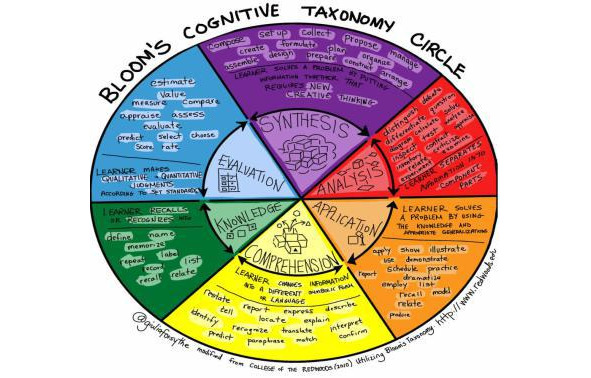
Students will be able to:
— research the traits of artists and the purpose of their non-profit endeavors;
— compare and contrast findings, within small groups, discussing professional skill sets required to support these non-profits;
— create a list of outlandish ideas for potential non-profit
Analyze: research
compare

Synthesize: create

— English-Language Arts
— History/Social Science
— Visual Arts & Performing Arts
— English Language Development
— A projector
— A Smart Board
— Computers with internet access
Bloom’s Taxonomy Action Verbs
Blooms Taxonomy — Best
Bloom’s Taxonomy of Measurable Verbs
Benjamin Bloom created a taxonomy of measurable verbs to help us describe and classify observable knowledge, skills, attitudes, behaviors and abilities. The theory is based upon the idea that there are levels of observable actions that indicate something is happening in the brain (cognitive activity.) By creating learning objectives using measurable verbs, you indicate explicitly what the student must do in order to demonstrate learning. Verbs that demonstrate Critical Thinking
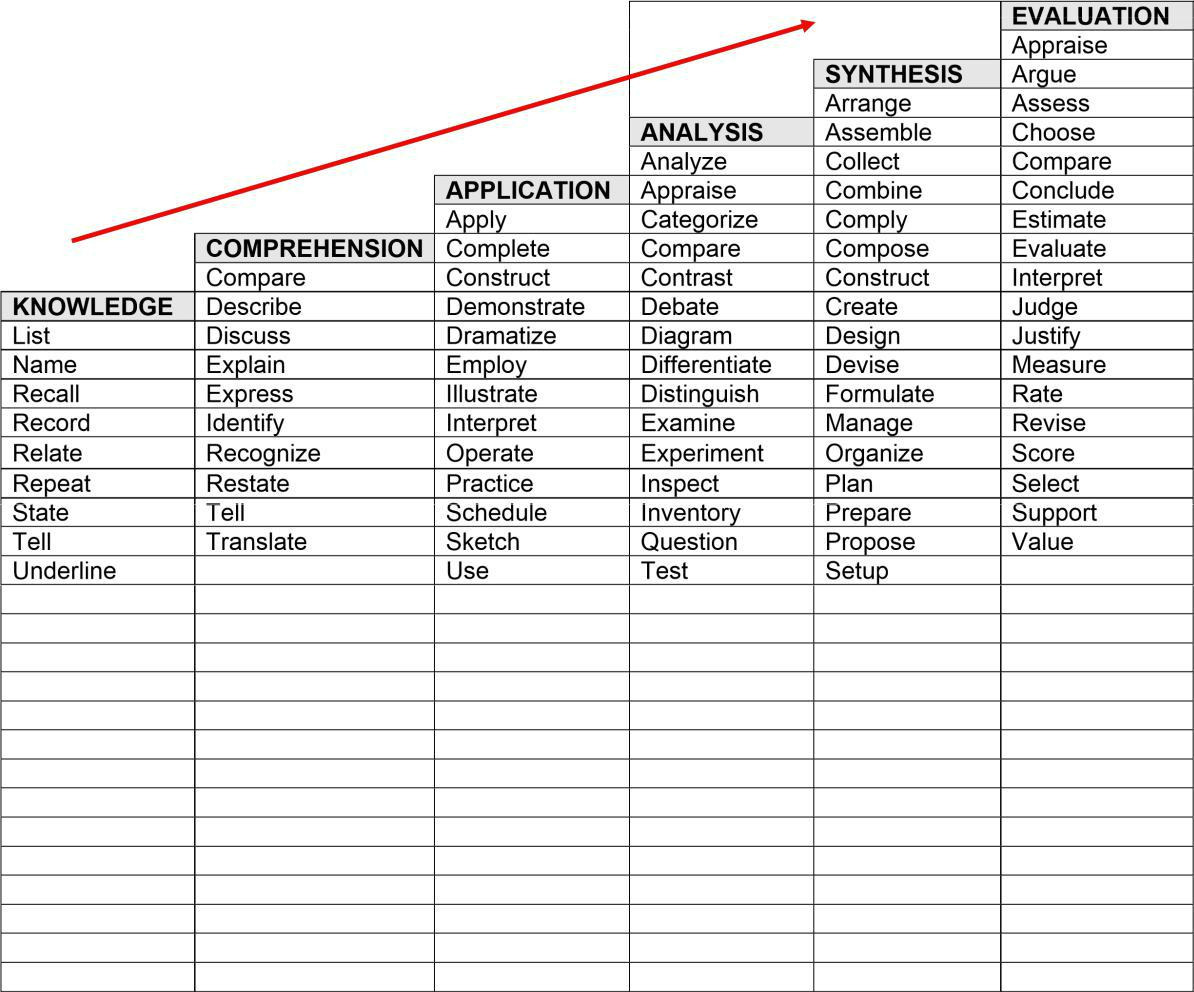
Bloom’s Taxonomy Action Verbs
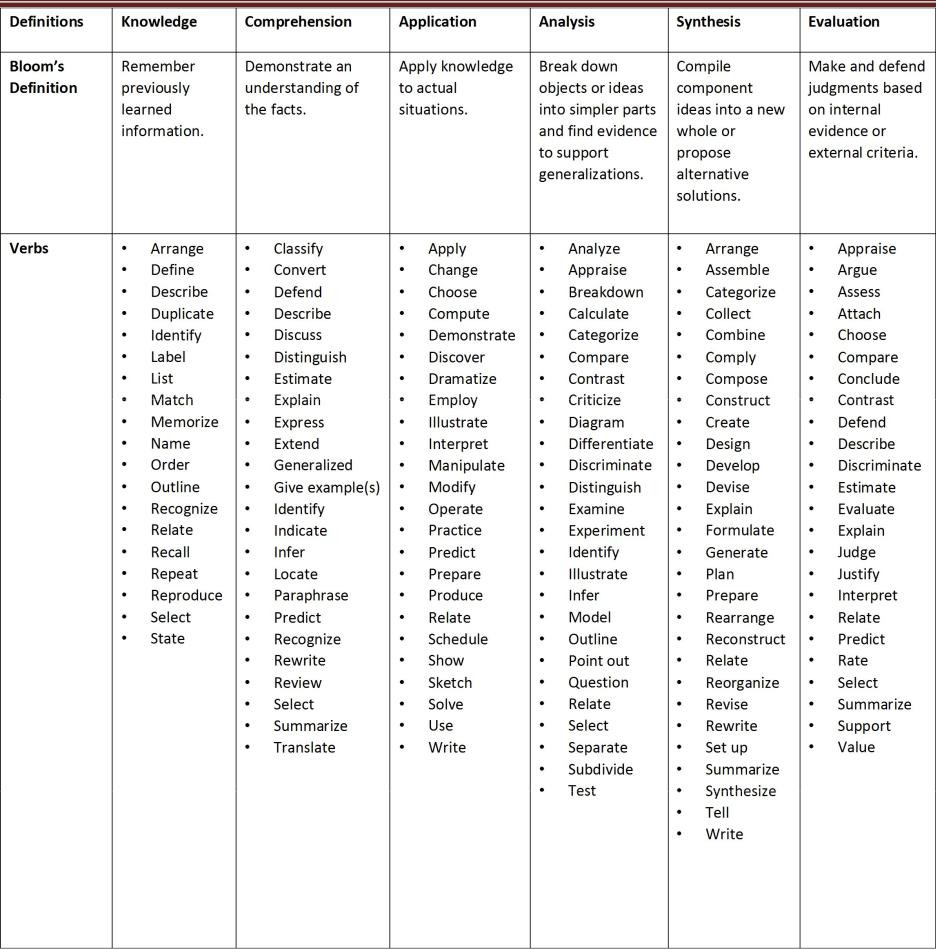
Bloom’s Taxonomy Verbs
Use verbs aligned to Bloom’s Taxonomy to create discussion questions and lesson plans that ensure your students’ thinking progresses to higher levels.
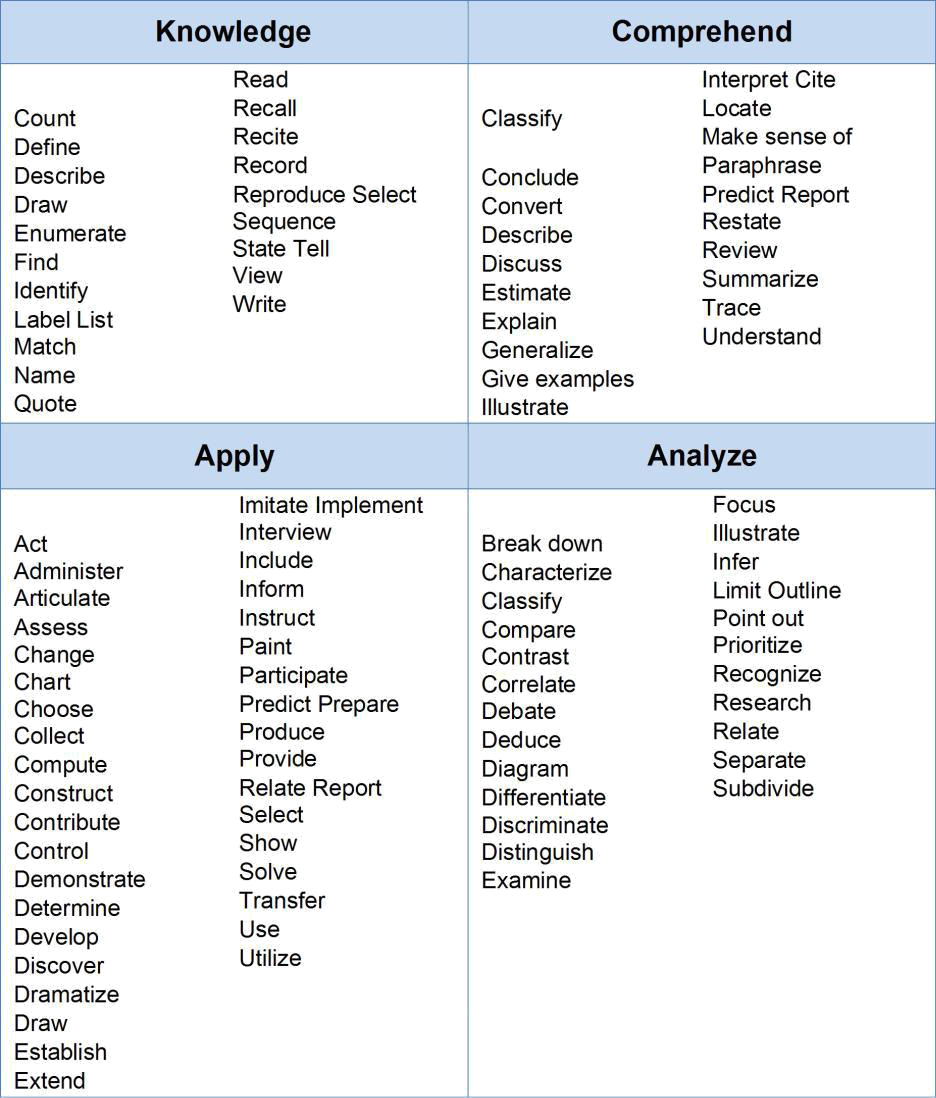
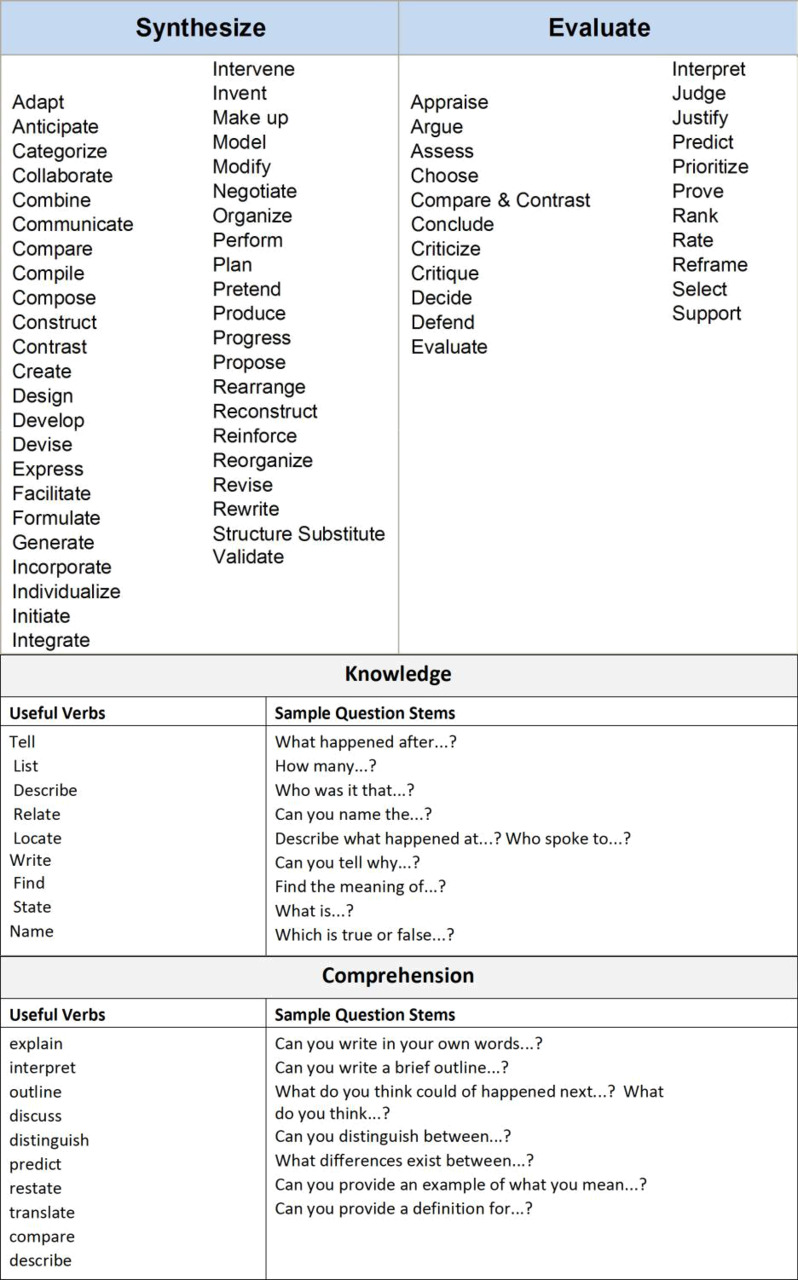
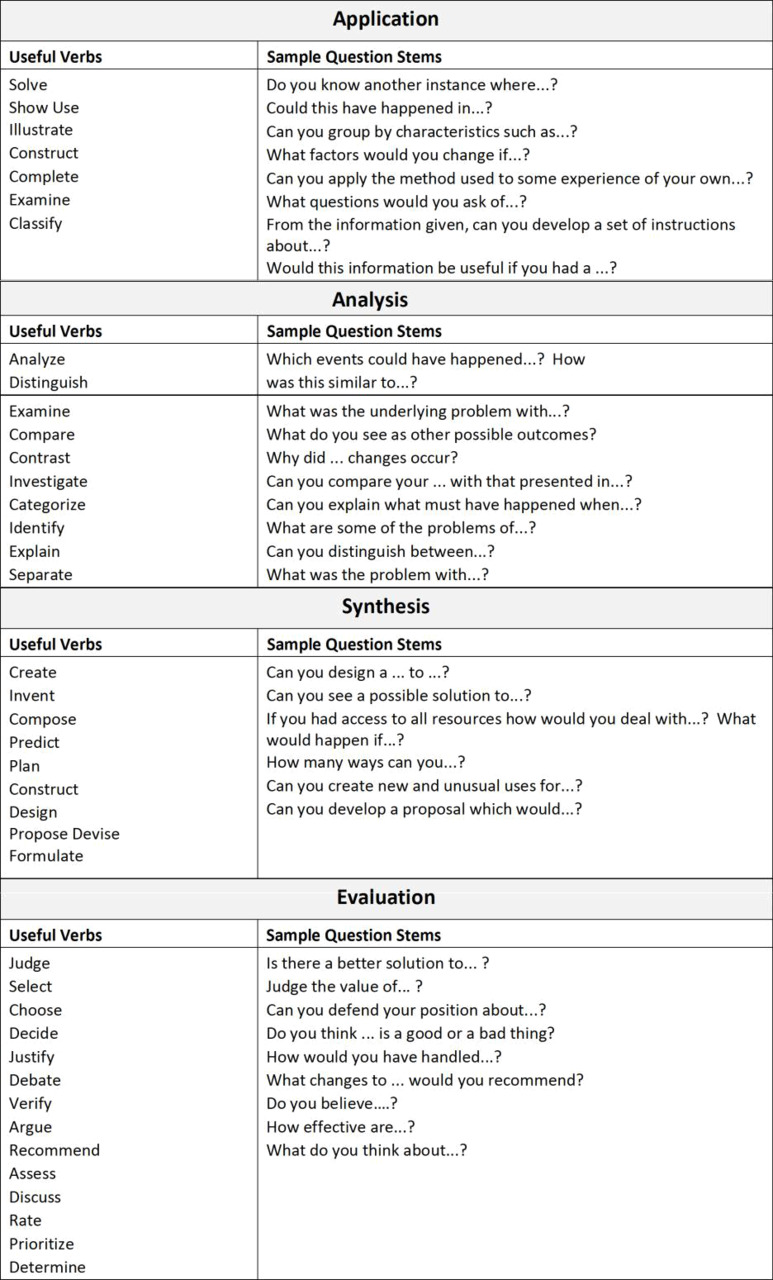
Bloom’s Verbs
And Matching Assessment Types
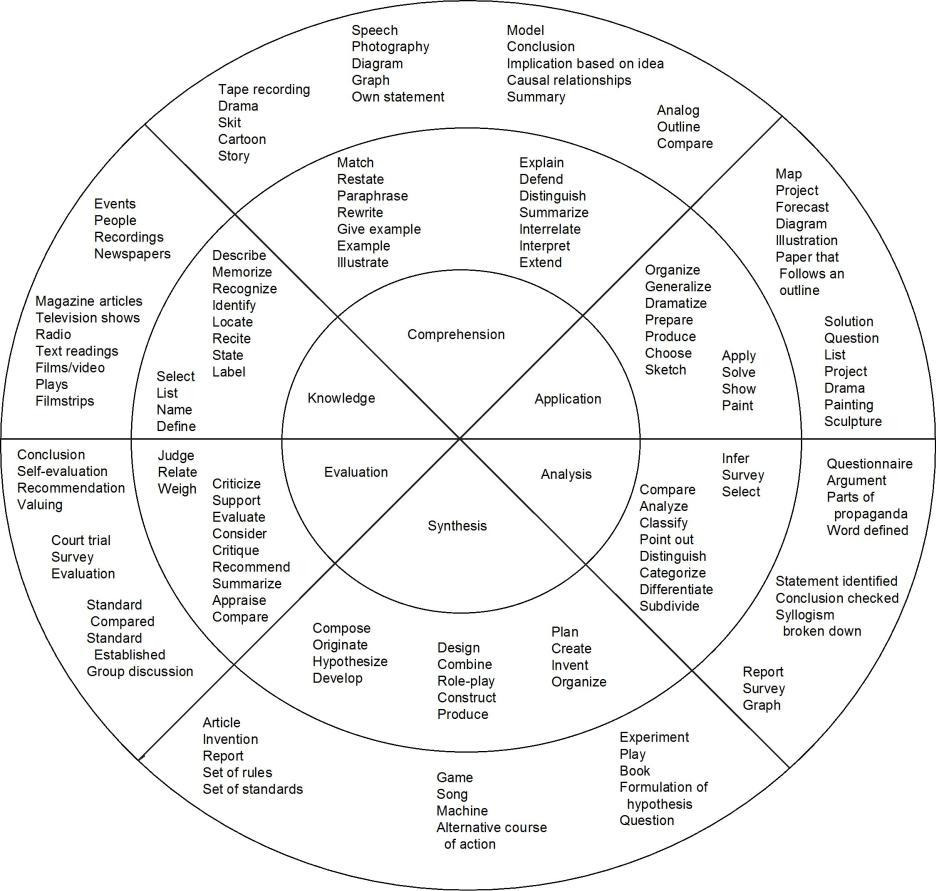
Source: The Tenth Annual Curriculum Mapping Institute: Snowbird Utah, July15—18, 2004 Adapted from Benjamin Bloom
Watch Out for Verbs that are not Measurable
In order for an objective to give maximum structure to instruction, it should be free of vague or ambiguous words or phrases. The following lists notoriously ambiguous words or phrases which should be avoided so that the intended outcome is concise and explicit.
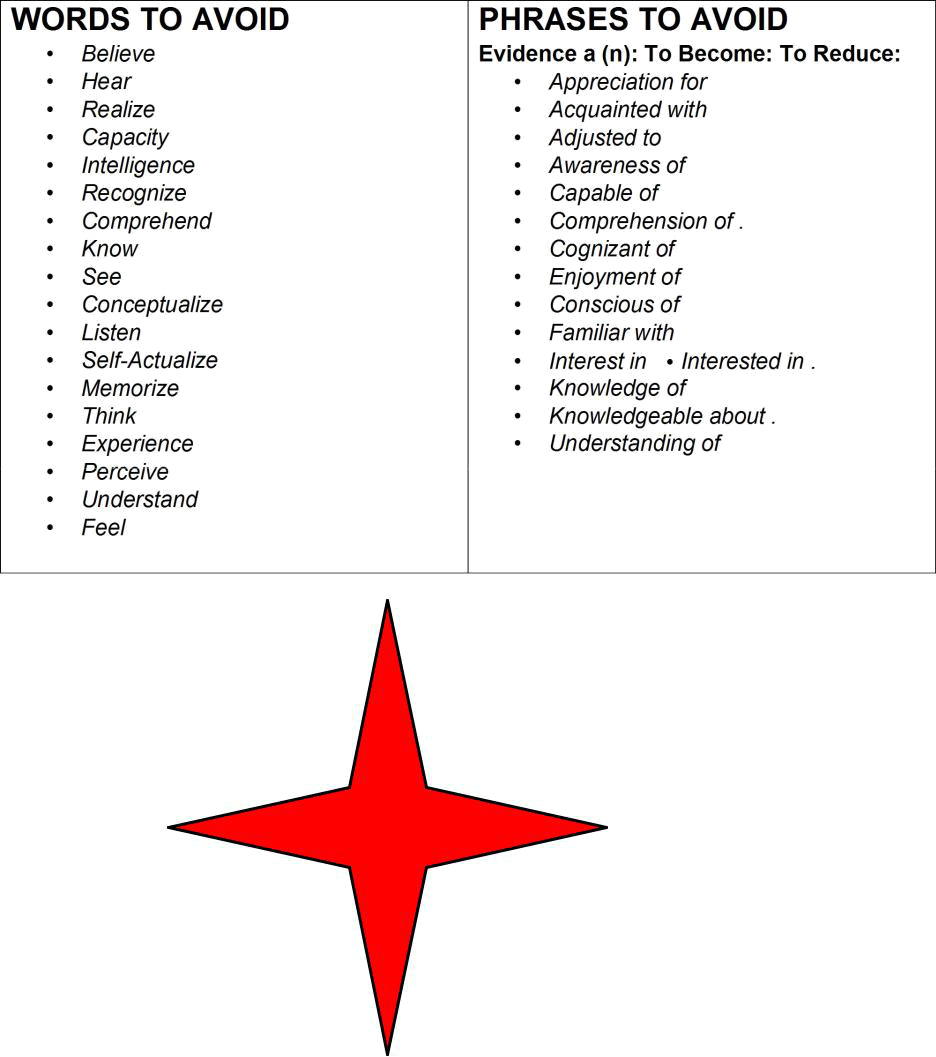
2. Warm-Up Activities

As a teacher, you always have to start with a warm-up when you begin a class to help the students waking up and start thinking about what they learned previously. The warm-up can be a quick review of the subject or a pre-lesson exercise of the new lesson. At the end of the warm-up, the teacher would take a look at where the student is at in terms of the exposure to the material they are going to learn or have learned in the previous lesson as a review.
Without Technology
Talk About…
— You have two minutes… introduce yourself to your partner.
• Now… introduce your partner to the group by sharing one interesting fact they told you.
• SWITCH! Variations Change the topic by giving a question — What did you do on the weekend? — What will you do at the weekend?
— Freestyle
How well do you know the teacher?
— Ask students to write down 5 questions they would like to ask you.
• Ask one student to come to the front.
— This student will now play the role of you and will guess the answer to five of the students’ questions.
• Give a «point» to the student for each correct answer and an ’x’ for an incorrect one.
• Each student takes turns guessing until each student has answered 5 questions.
• Re-ask questions that were answered incorrectly to gain more information about you.
• Once every student has had a chance to be the teacher, answer the questions about you which were left answered incorrectly.
Two Truths and a Lie Two of these statements are true, one is false. Which is which?
A.I’m afraid of horses.
B. I love sushi.
C. I have broken my arm right arm twice.
Picture Differences
• Another paired activity
• Students receive two similar pictures that have small differences • Students must communicate to discover what the differences are
• No peeking!
Picture That!
• Again… pair students
• One speaker, one drawer
• Speaker receives a picture which they must carefully describe to their partner
• Partner draws what is described
• At the end, compare pictures to judge success!
• Level of difficulty can be varied
20 Questions
• Give each student a picture cut out from a magazine
• Students ask each other yes/no questions to gather information and try to guess each other’s pictures
• Partners or group members may ask up to 20 yes/no questions
Can’t Say Yes or No In this game everyone is given a certain number of coins or squares of paper (about 10). Everyone moves around the room starting conversations and asking each other questions. The only rule is that you cannot say the words YES or NO. If you accidentally say one of these words, you have to give a coin or square to the person who you said it to.Try to trick each other by asking questions that you would almost always answer with a yes or no. Think of other ways to trick your friends. Sometimes asking two quick questions in a row works well. (Especially tag questions: Are you new here? This is your first time in America, isn’t it?). This game is a great way to practice using small talk and to add variety to your vocabulary. It also makes everyone laugh.
Fact or Fiction
In this game, one person tells a short story about themselves or someone they know or heard about. Usually, it is something funny or crazy. It can be a true story, or something made up. Example: Josh tells a story about his Uncle Leo who sleeps in the nude. One day Uncle Leo was sleepwalking and he went outside and took his dog for a walk. The next-door neighbor was coming home late from work and saw him! She called the police and he got arrested for being naked in public. Everyone around the room has to say whether they think Josh’s story is a fact (true) or fiction (made up). Josh reveals the truth when everyone has guessed. Members can take turns telling a story.
Chain Fairy tale
This is a fun writing warm-up. Everyone has a piece of paper and writes the first sentence or two to start a fairy tale (not one that already exists).Example: Once upon a time there was a frog that had no legs. He wanted to get married, but there were no female legless frogs in the land. After one minute the leader will say «SWITCH». At this time the writers have to put down their pens and pass the papers. They cannot finish their sentences. Then, the next writers will continue the story. After about ten minutes you will have as many silly stories to read as you have club members. The leader should warn the writers that they will soon have to wrap-up the story during the last two minutes so that each story has a conclusion. Read all of the stories out loud for a good laugh. You can extend this activity by trying to edit each other’s writing and spelling errors.
Jeopardy
In this game, which is based on the famous game show Jeopardy, everyone writes down ten answers to questions about themselves. After writing down the answers, people have to form pairs or small groups and try to find out what the questions are. Example: (answer = purple) «What is your favorite colour?» «Blue.» «What colour do you hate?» «Green.» «What colour is your underwear?» «Purple!» You can stop at three guesses if you want, or keep going until someone in the club can guess the question.
Hot Seat
In this game, the club is split up into two teams. One member from each team sits facing the group. The leader holds up a word (or writes it on the board if you are in a classroom) for all of the team members to see except for the two players in the hot seats. The teams must try to get the person in the hot seat to guess the word or phrase. The first person to guess correctly gets to stand up and a new member from their team takes the hot seat. The person on the other team has to remain in the hot seat until she gets an answer first. You can keep score or just play for fun. This game can also be played in pairs. One pair member closes their eyes while the leader shows the word to the other pair members. The first pair to get the word right gets a point. Warning! This is a loud game because people tend to get excited and yell!
Broken Telephone
This is a listening and pronunciation activity that always gets people laughing. The leader first must think of a sentence or phrase and whisper it to the person beside her. That person will then whisper what she heard to the next person. Each person can only say, «Can you please repeat that?» one time. When the message reaches the end of the chain that person must speak out loud. Oftentimes the message will be completely different when it reaches the end. Try to find out where the chain broke! In a big group, you can send the message two ways and find out which team comes closest to the real message. (A famous example is the army message that started as «Send reinforcements, we’re going to advance» and ended as «Send three and fourpence, we’re going to a dance.»)
Find Pikachu
The idea of this activity is simple: students go around the school to hunt for Pokémons trapped in the QR world! Each QR code contains a Pokémon with varying points depending on its level or tier, and a corresponding question or task. Of course, students must be able to answer the question, or do the task successfully in order to earn the points of the Pokémon they had caught!
Create a separate code with game rules that students scan before they go outside.
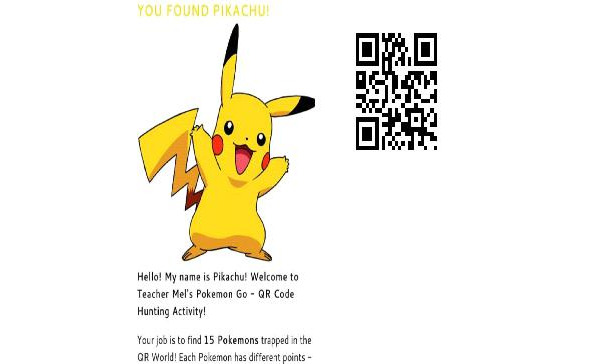
1. Ready your questions or tasks for
students.
It can be review questions from your topic
or unit, or simple tasks that students can
do during the activity.
For example, you can ask them to create a 6-box comics strip on their notebook or research something on the internet.
2. Download Pokémon characters that you want to use.
This website has a list of different Pokémon characters with their corresponding tiers or levels. Pick the characters that you want to include in the game according to the number of questions you have, i.e., 15 characters for 15 questions. A quick search on Google images will give you bunch of images to download.
3. Assign a question or task to a character
Easier questions should be assigned to lower-tier characters while challenging questions or tasks should go with the god-tier Pokémons. Feel free to vary the points as you wish, i.e.,
level 1 Pokémon = 1 point;
level 2 Pokémon = 3 points;
god-tier Pokémon = 5 points.
How to Create the Codes
QR Info Point https://qrinfopoint.com/
allows you to upload multimedia into your codes which is very crucial for this type of activity. Most importantly, it’s 100% free!
Create an account with QR Info Point. Creating an account lets you create dynamic QR codes (meaning, editable codes) which you can edit anytime!
Type QR Code’s title, for example: «Pikachu — Game Rules» (yes, I use Pikachu to introduce the game to the kids!)
Choose template, for example: «Personal» but this is optional.
Upload your multimedia content which, in this case, is your Pokémon character!
Change the text of the template, edit your content: type your question for the corresponding Pokémon character.
Click on «Save» button to generate QR Code.
Download the generated code as image file and rename, for example «Pikachu — Game Rules»
Repeat steps 1 to 7 for the remaining Pokémon characters/questions.
How to Set up and Play the Game
Print and cut out your generated QR codes. Tip: use PowerPoint (A4 size) to organize your QR codes. You can add a title or additional description on the printout.
Place printed QR codes across the school.
Put students into small teams or pairs with one person owning a mobile device.
Students search for and scan each QR code to catch a Pokemon and see the question or task.
Students work together to answer to the question or perform the task.
The team earns the point for the Pokemon if they got the correct answer.
The team with the highest points wins the game.
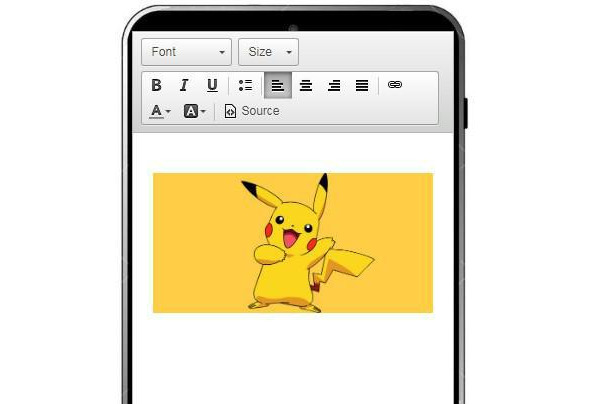
Requirements
Ask students in advance to download any FREE
QR code reader app
Students must have internet access during the game as the codes are linked to a 3rd party website (QR Info Point)
Warm-up activities using technology

Pictures
Another activity is by showing your learners some very close-up pictures you took with your smartphone. This can be done very quickly by going into your staffroom or looking around your desk and taking very, very close-up pictures of different objects, showing them to the students and trying to get them to guess what they are. You can display these pictures on the class projector in your our classroom or you can send them to the students if they have mobile phones with an Internet connection and they can access them through email. A follow-up to this, assuming you have the time, is that you can get the students to do this themselves. They can go for a few minutes around the school with a partner and take some pictures of things close up and then show them to the other members of the group. Alternatively, they could do this before they come to class and send them to the class.
Word clouds
An engaging way to revise a text and the accompanying vocabulary that you have recently looked at in class is to create a word cloud and then getting students to look at the word cloud to try to reconstruct the text. These word clouds generally emphasize keywords and will make words that appear more frequently bigger. This helps students because they were able to identify repeating ideas or common themes in the text and this helps them to reconstruct
it. To create a word cloud, you can go to popular websites such as Wordle or Tagxedo. This can be printed out from the website or you can just show on the board. A quick online quiz
A quick online quiz can be a great way to start a lesson and there are loads of websites out there for creating them. The one I tend to use most is Socrative simply because it’s so easy to use both for the teachers and the students. The teacher does have to register to make a quiz but it’s a fairly painless procedure. You can build multiple-choice or short-answer quizzes, and these can easily be made available to the students by them going to a particular webpage on either a computer or their mobile phone (there is also a mobile app) and just typing in a room number that the teacher assigns. They can then take the quiz and get instant feedback on their answers. As a teacher, you can display the progress of the students on the board and you can control whether the students go at their own pace or a pace you decide. Again this is quite nice the checking recent vocabulary Grammar or anything else you want to revise or recycle from your lessons.
Hunt for QR Codes
This game is similar to the classic treasure hunt game except that students have to search the school for QR codes which contain questions or clues to the game.
Playing this fun activity is easy. First, I prepare a list of questions from the topics that I want my students to learn or revise. Then I create and print the QR code for each question and place them across the school.
Students are put into small teams or pairs with one person owning a mobile device. They need to download a QR code reader first which is free on App Store or Google Play. Internet connection is not required once they have the app since the QR codes decode as text files. Now, students need to search the school for these clues and scan each QR Code to get each question. They must then work together to find the answer to this question. The team that brings the most number of answers wins the game
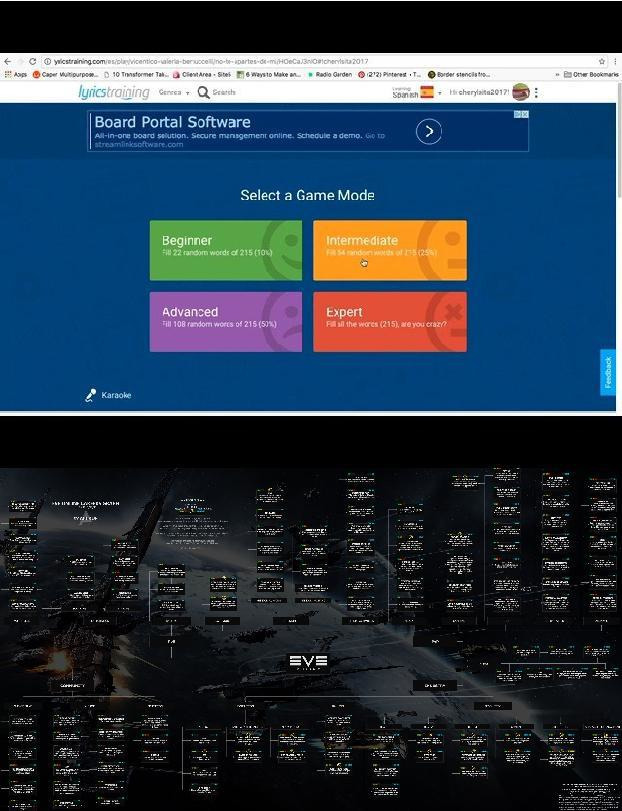
— —
— EVE Online. Practice running the most powerful company in the world so you can sharpen your skills for
management in the real world.

2 — ElectroCity. Created in New Zealand for middle-school aged students, ElectroCity teaches about energy, environment, and more as the students build and manage their own towns.
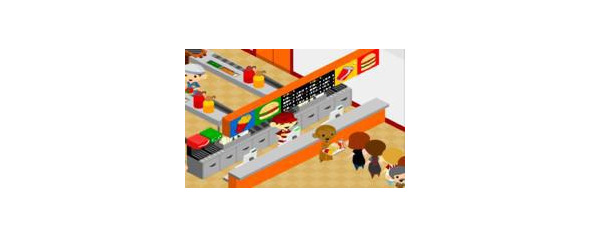
3 — McDonald’s Video Game. Choose your language, then dive into this game that teaches about the harmful effects of fast food with a heavy dose of irony.
Collection of interactive whiteboard games for educators Pic-Lits — Drag words onto photographs to describe the scene or mood. The default language is english. A PIC-LIT is a combination of words placed on an image to capture the essence, story, and meaning of the picture. It can be a caption, a sentence, a story, a paragraph, a poem, a quotation, and more. You can create a PIC-LIT using Drag-n-Drop keywords or in Freestyle by typing your own words.
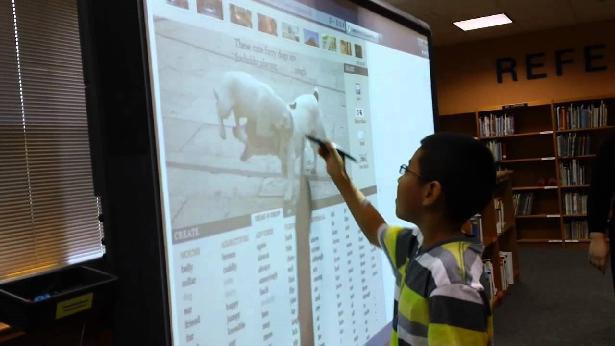
— — PIC-LITS.COM is an e-learning website that utilizes photography and word banks (keywords) to improve literacy skills via writing. It is a teaching tool and student learning platform that not only develops writing but helps to improve reading skills as well. With an emphasis on visual learning, the user is engaged by doing. The proprietary site is a vehicle for creativity, fun, and learning that lasts. It is also interactive and a social medium for people of all ages globally.
Practice Lab 2. Create your warm-ups
Steps
1. Warm-Ups without Technology.
2. Then think what technology would be most
appropriate.
What Makes a Good
Warm-up?
— Short (10 — 15 minutes)
— Nothing new or difficult
— Reviews a previous lessons or skill
— Sets the stage for an upcoming lesson
— Fun, interactive, communicative
— Gets students moving!
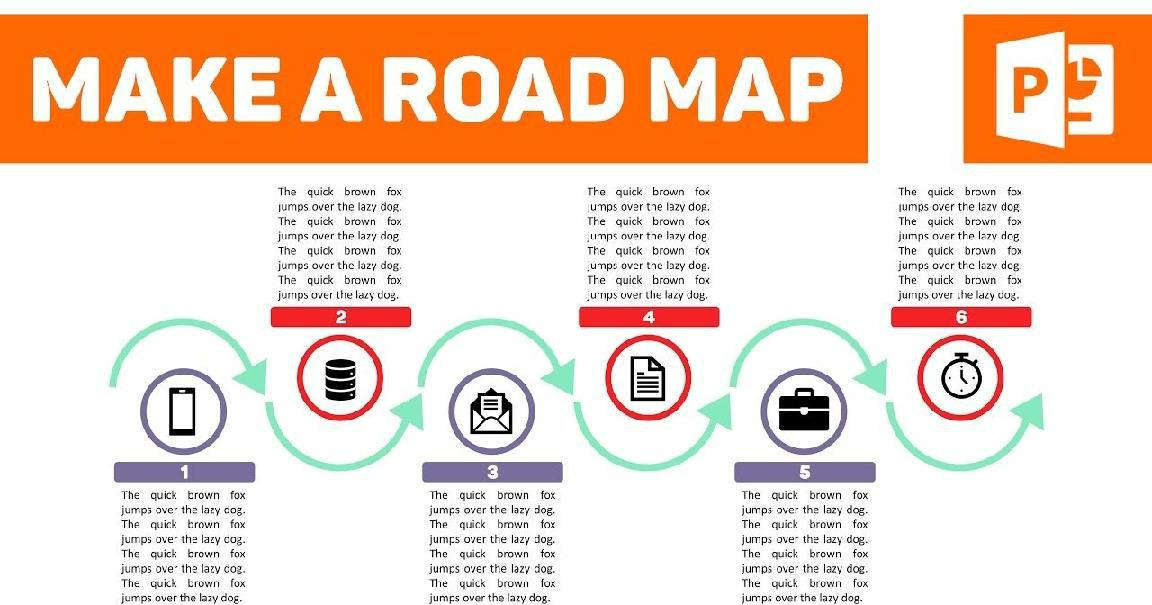
Warm-Ups: «Phrasal Verbs Game». My example. Reading/Writing Lesson
My Sample 1 Warm-Ups without Technology
Material
Phrasal Verbs cards
— Teacher will divide the class into 2 teams to play the game in whole class.
— Teacher will request a volunteer who wants to explain the words to the team members, from both teams.
— Students will play the Phrasal Verbs guessing game again to win the other team. During the games, teacher will mark their score on the board.
— If there are the Phrasal Verbs that nobody knows, teacher could explain the meaning after the game. If at least one student knows the Phrasal Verbs, teacher could make him explain the Phrasal Verbs to the classmates.
Then think what technology would be most appropriate
https://www.youtube.com/watch?v=kSntadOvQAY&t=56s Phrasal Verbs in Context of Movies. Video clip
— Teacher will divide the class into 2 teams to play the game in whole class.
— Teacher will request a volunteer who wants to explain the words to the team members, from both teams.
— Students will play the Phrasal Verbs guessing game again to win the other team. During the games, teacher will mark their score on the board.
— If there are the Phrasal Verbs that nobody knows, teacher could explain the meaning after the game. If at least one student knows the Phrasal Verbs, teacher could make him explain the Phrasal Verbs to the classmates.

My Sample 1 Reading/Writing Lesson
Dreaming.
Developing Myself 1
14+
Intermediate (Reading skills including focusing on topic sentences plus using context to work out the meaning of unknown words. Follow on activities include thinking of ways to search for eternal youth).
Make associations between new information and their prior knowledge, use new information to clarify or modify their prior knowledge, read and listen between lines, relate new concepts to their own lives, to their experiences, knowledge, beliefs, and feelings. Create a mental, oral and written summary of information.
Keep Your Dream. Welcome Reader https://www.moralstories.org/keep-your-dream/ Dreams are very important in life. They motivate, inspire, improve and help you in achieving any goal that you want to achieve.
Lesson Objectives
— Students will be able to define vocabulary words,
identify the main characters, describe the scenes and setting.
— Students will be able to explore a dream ambition.
— Students will be able to write imaginatively, creatively and thoughtfully, producing texts that interest and engage the reader.
— Students will be able to generate and harness new ideas and develop them in their writing.
Business/Materials
— https://www.moralstories.org/keep-your-dream/ Keep Your Dream. Welcome Reader
— A projector
— A Smart Board
— Computers with internet access
Warm-up (with Technology. Video)
«Phrasal Verbs Game»
1 — Phrasal Verbs
— The teacher will divide the class into 2 teams to play the game in the whole class.
— The teacher will request a volunteer who wants to explain the words to the team members,
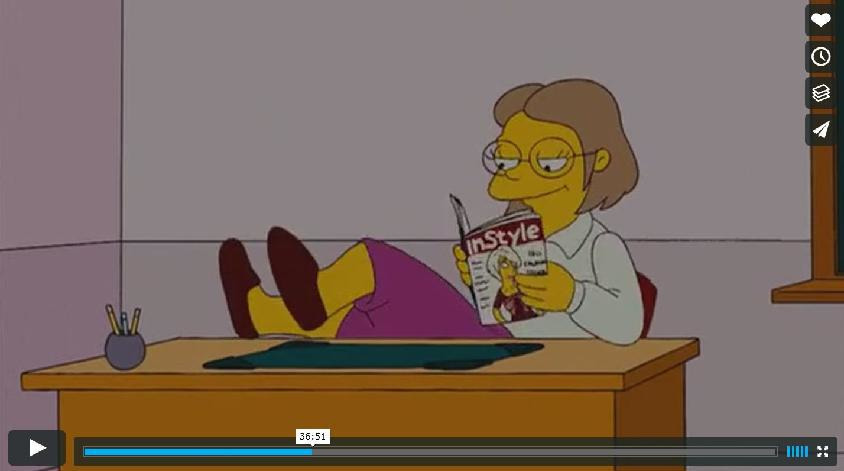
from both teams.
— Students will play the Phrasal Verbs guessing game again to win the other team. During the games, the teacher will mark their score on the board.
— If there are the Phrasal Verbs that nobody knows, the teacher could explain the meaning after the game. If at least one student knows the Phrasal Verbs, the teacher could make him explain the Phrasal Verbs to the classmates.
My Sample 2 Warm-Ups without Technology
Listening/ Speaking Lesson
Warm-Ups: “ What do you know about ……?» What’s in the air?
Set a five-minute time limit and in groups have students think up and write down as many facts as they can about what’s in the air?
Then think what technology would be most appropriate.
— Display the question What`s in the air in fullscreen mode withPoll Everywhere https://www.polleverywhere.com
— Set a five-minute time limit and in groups have students think up andtype down as many facts as they can about what’s in the air?
— Instructions view allows you to accept responses on an active question without showing the live incoming responses to your audience.
Exploring Social Issues
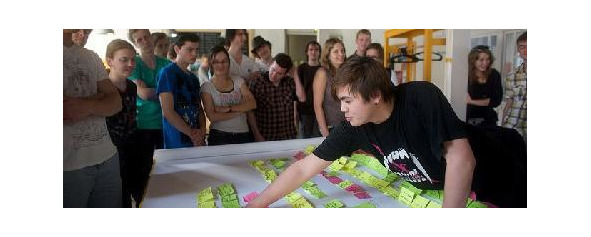
14+
Intermediate
Air Quality Concerns Close Schools, Colleges https://www.youtube.com/watch?v=Mter5lTxT2
Students reflect on what they have learned about air pollution

1 — Air Quality Concerns Close Schools,
Colleges
Lesson Objectives
The students will be able to:
— use appropriate words and phrases to demonstrate their understanding of a social issue;
— listen for specific information;
— apply listening and encoding (spelling) skills
Business/Materials
— https://www.youtube.com/watch?v=Mter5lTxT2o Air Quality Concerns Close Schools, Colleges
— A projector
— A Smart Board
— Computers with internet access
Warm-Up
Poll Everywhere

— Display the question What`s in the air in fullscreen mode with Poll Everywhere https://www.polleverywhere.com
— Set a five-minute time limit and in groups have students think up and type down as many facts as they can about what’s in the air?
— Instructions view allows you to accept responses on an active question without showing the live incoming responses to your audience.
My Sample 3. Warm-Ups without Technology
Teacher`s book Result Advanced — OUP —
Oxford University Press_
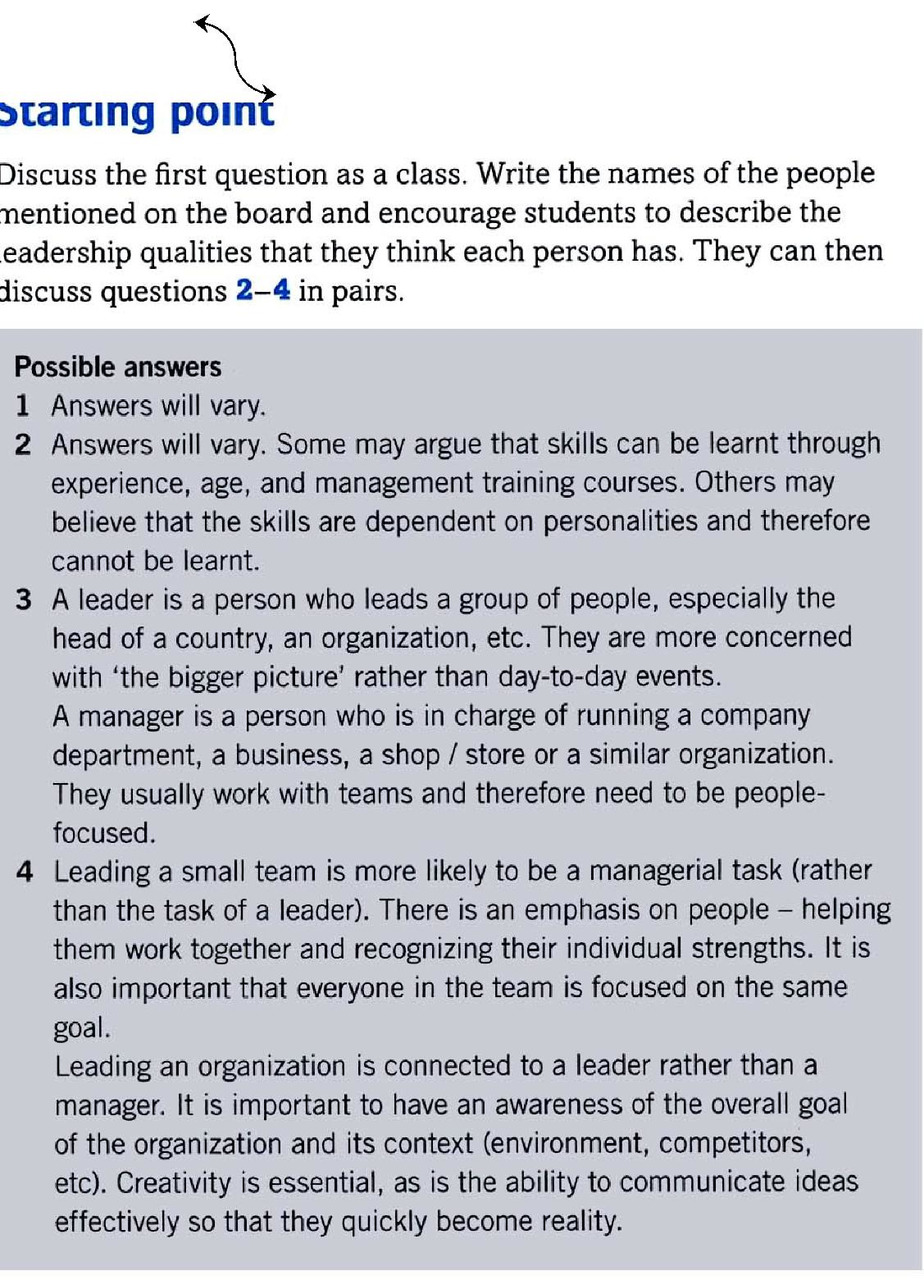
Teacher`s book
Teacher`s `book “_Business Result Advanced — OUP — Oxford University Press___ (10) _____________»
My Sample 3
Then think what technology would be most appropriate
— Use a quiz game. https://puzzles.independent.co.uk/games/personality_which-world-leader-are-you/
— Which World Leader Are You?
— Students find out which powerful person shares their personality! (What is the most important leadership quality? If necessary, would you use force to achieve your goals? Which of the following accomplishments would make you most proud? Which hue best represents you? Is national pride important to you? In which of these subjects did you most succeed at in school? Have you ever been given a job through family connections?)
— Students can share their results.

Business Result Advanced — OUP — Oxford
University Press (10) 1
For pre-work and in-work professional students Advanced (C1-C2)
Business Result Advanced
A business English course for pre-work and in-work professional students. Kate Baade, Michael Duckworth, David Grant, Christopher Holloway, Jane Hudson, John Hughes, Jon Naunton, Jim Scrivener, Rebecca Turner, and Penny McLarty
Lesson Objectives
Students will be able to:
— create a personal vision statement that reflects the student’s personality traits and core values.
— set SMART goals that are specific, measurable, attainable, and realistic.
— write an action plan for achieving their goals
Business/Materials
— Business Result Advanced, НМК: Business Result
— A projector
— A Smart Board
— Computers with internet access
Warm-up
1 — The game «Which World Leader Are You?»

• Use aquiz-game.
• https://puzzles.independent.co. uk/games/personality_which-world- leader-are-you/
• Which World Leader Are You?
• Students find out which powerful person shares their personality! (What is the most important leadership quality? If necessary, would you use force to achieve your goals? Which of the following accomplishments would make youmost proud?
Which hue best represents you?
Is national pride important to
you? In which of these subjects did you most succeed at in school? Have you ever
been given a job through family connections?)
— Students can share their results.
My Sample 4 Warm-Ups without Technology
STEM Lesson __ Addressing Social Issues through Art ________________________
Make Posters
— Hang large pieces of butcher paper on the walls at various spots around the room. Label the posters «Group 1,» «Group 2,» and «Group 3.»
— Break students into their assigned groups and give them each a few colored markers. A good way to break students into groups is simply by numbering them — that is, go around the room to each student and give him a number, such as: «You are No. 1, you’re No. 2, you’re No. 3, etc.» —
— Do this until all students have a number ranging from one to five.
— Have each group choose a leader, recorder, and reporter. You may be surprised how artistic and clever the students are in creating original posters. The topics can include any of the issues you are studying currently in class or topics related to issues you plan to cover in the near future.
(Is the media biased? Why or why not. Is democracy the best form of government? Will racism ever die?)
Then think what technology would be most appropriate
Make Posters
— Students use https://www.postermywall.com PostermyWall. Fantastic site for making posters. This is the easiest software to use. Create the perfect poster, flyer or social media graphic.
— Label the posters «Group 1,» «Group 2,» and «Group 3.»
— Break students into their assigned groups. A good way to break students into groups is simply by numbering them — that is, go around the room to each student and give him a number, such as: «You are No. 1, you’re No. 2, you’re No. 3, etc.» —
— Do this until all students have a number ranging from one to five.
— Have each group choose a leader, recorder, and reporter. You may be surprised how artistic and clever the students are in creating original posters.
— Students share designs and folders with team to edit them together. (Functions: 1.My Stuff 2.Shared with me)
— The topics can include any of the issues you are studying currently in class or topics related to issues you plan to cover in the near future.
(Is the media biased? Why or why not. Is democracy the best form of government? Will racism ever die?)

Addressing Social Issues through Art 1
16+
Advanced (C1-C2)
English-Language Arts
History/Social Science
Visual Arts & Performing Arts
English Language Development
What social issues motivate students within their community? The purpose of this lesson is
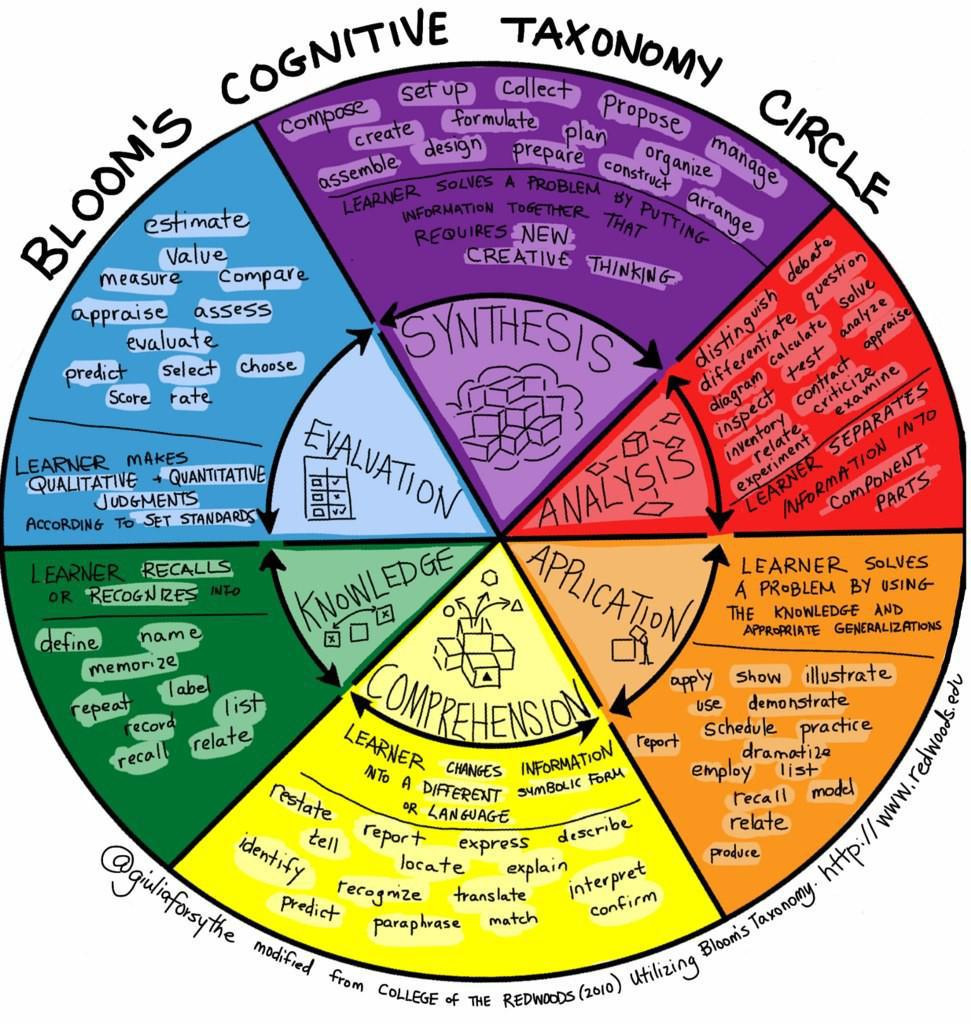
for Individual students to develop a Project where they design a nonprofit business plan using
their art major to facilitate their organization’s mission.
Lesson Objectives
Students will be able to:
— research the traits of artists and the purpose of their non-profit endeavors;
— compare and contrast findings, within small groups, discussing professional skill sets required to support these non-profits;
— create a list of outlandish ideas for potential non-profit
Business/Materials
— English-Language Arts
— History/Social Science
— Visual Arts & Performing Arts
— English Language Development
— A projector
— A Smart Board
— Computers with internet access

Warm-up
Make Posters
PostermyWall
1 — Make Posters
Students use
PostermyWall. Fantastic site for making posters. This is the easiest software to use. Create the perfect poster, flyer or social media graphic.
— Label the posters «Group 1,» «Group 2,» and «Group 3.»
— Break students into their assigned groups. A good way to break students into groups is simply by numbering them — that is, go around the room to each student and give him a number, such as: «You are No. 1, you’re No. 2, you’re No. 3, etc.» —
— Do this until all students have a number ranging from one to five.
— Have each group choose a leader, recorder, and reporter. You may be surprisedhow artistic and clever the students are in creating original posters.
— Students share designs and folders with team to edit them together. (Functions: 1.My Stuff 2.Shared with me)
— The topics can include any of the issues you are studying currently in class or topics related to issues you plan to cover in the near future.
3 Objective Discussion

The three reasons
— Communicating objectives to students send a strong message about who is driving the learning.
— Communicating objectives to students gives away the ending before the uncovering even begins.
— Communicating objectives to students discourage students and teachers from pursuing potentially constructive lines of inquiry that appear tangential to the objectives.
How often have you been told that writing the lesson’s objectives on the board is best practice?
Can you think of even one reason why doing this might be a bad idea?
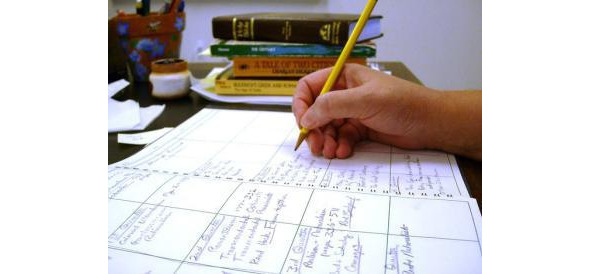
Can you argue? A real story. From a teacher.
That one of my old schools, the principal would insist on written objectives in every classroom because he believed that it was the uniformity in the classroom that routine that helped the school function effectively. While I don’t totally disagree that the consistency and structure helped, it sometimes resulted in some artificial and arbitrary steps teachers were required to take during formal observations. Not only were teachers expected to write up objectives, but also to elicit these objectives (aims) from students. While students were often polled to suggest possible objectives based on warm-up or introductory activities, I don’t think it gives students enough credit to suggest that they felt «ownership» of the lesson because the objective came from them, especially when the teacher made no secret of the fact that the objective was written in the lesson plan. A few years later at a new school that does not require it, I do find myself still writing objectives and agendas on the board. The agendas are generally for me to keep track of the pace of the activities I usually arrange for lessons, but I do tend to use quirky titles that sometimes prompt students to wonder how they relate to what we are doing in the activities leading up to them. Again, these are generally for me though. Some students like writing the objectives in their notes as organizational tools, which I can understand. Still, there are some days when I don’t put one up because I don’t know exactly how much we will figure out over the course of the period. I really value the freedom I currently have because I remember what it was like to not have it and because I know that many don’t have that freedom at all.
Are you fed up with using the same old methods to introduce your lesson topic?
OBJECTIVE DISCUSSION. WAYS TO INTRODUCE YOUR LESSON TOPIC
Using an anecdote
Example topic: idioms

You know I play football, right? No? Well I love it. Anyway, I went into town to buy some new boots the other day. I’m in Sports Direct, and I see these Nike boots that I really like, they’re the new model. The assistant comes over and is like «can I help you?»
And I’m «yeah. Can you tell me how much these
are?» She says «They’re £500»
And I said “£500???? That’s an arm and a leg!
Cuisenaire Rods creation
Example topic: Tourist attractions
Give each pair of students a bunch of Cuisenaire rods.
«Work in pairs. Use the rods to create a model of a well-known tourist attraction in [town/city/country/continent]. You have 2 minutes» Students then look at each model and guess the attraction.
Cuisenaire Rods model
Create your own model using rods. Elicit what it represents.
Example of the UK political parties and their share of the vote, for a lesson on politics)

The Musical «Guess the topic»
Example topic: family and relationships
Think of 3 or 4 songs which in some way reference the theme/topic of your lesson
Avril Lavigne — Skater Boi («he was a boy, she was a girl, can I make it any more obvious?»)
The Hollies — He ain’t heavy (he’s my brother)
Baz Luhman — Everybody’s free to wear sunscreen («maybe you’ll marry, maybe you won’t…”) Ozzy Ozbourne — Mama I’m coming home
Play students a relevant segment of the song (where something about the topic is referenced).
Ask them to write notes on what they hear, compare notes, and guess the topic of the lesson.
Family fortunes
Example topic: British customs and culture / stereotypes
Create a fake family fortunes style question:
«We asked 100 people from England, Scotland and Wales — which things make you a
typical Brit?»
Board the following
1 ________________ 2 ____________ 3_____________ 4____________ 5____________
Students work in groups to prepare answers. Make it a little game (they win points for each correct answer).
Five possible answers for the above: queuing, drinking tea, talking about the weather, eating fish and chips, having bad teeth.
Picture parts
Example topic: animals
Make some extreme close-up pictures of animals. Pass them around and get the students to guess what they are and hence the topic of the lesson
— Picture association «Guess the topic» Example topic: «once in a lifetime’
Gather pictures of things that people MIGHT do only once in a lifetime.

Examples: drive a Ferrari, skydive, run a marathon, win the lottery (?), see a shooting star (?).


Board the pictures or pass them round, students discuss each one and guess the common theme.
Complete the sentence
Topic: Making apologies
Think of a relevant starter sentence and have students complete in their own words «The most common time to say sorry is….»
Topic: 2nd conditionals
«If I looked like David Beckham, I would…»
— Me/not me

Example topic: Food and drink
Get students to create a table with two categories
Read a list of different foods/drinks. Students write each word you dictate into their table in the correct category depending on their tastes. They then compare with their partner/group to see if they are similar or different.
What are they saying?
Display a picture of someone on the board. Give students a speech bubble in groups, or draw a speech bubble for each group on the board. Students write what the person is saying

You could also do a caption competition
— Me and my partner questions
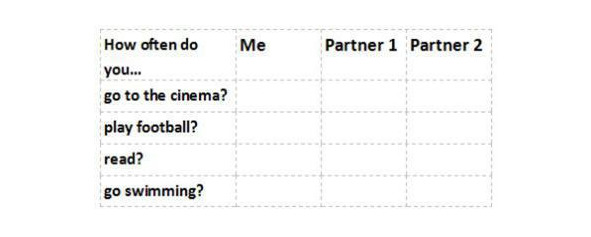
Example topic: hobbies and interests
Make a series of questions or statements related to the topic. Have students answer the questions themselves. Then, they ask their partner the questions and compare answers. They could do this with two different partners to add more speaking. They could even predict their partners answers first, and see if they were right.
Classic «Find someone who…» mingle
Students walk around asking questions to classmates to find out information.
Compare answers with their partner afterwards, and feedback as a class.
Example topic: fears/phobias

Slow reveal…
Start drawing a picture on the board, but only one line of it. Have students guess what it is «A snake’, «a line’, etc.
Encourage creativity. Add the next line, encourages guesses, keep doing this until eventually a student guesses the picture/lesson topic

Example topic: Castles in Britain
Realia
Example topic: hobbies and interests
Bring in 5 items that represent your own hobbies, can students guess pastimes?
Mine — Bit of wool (knitting), keyboard (blogging), crossword, binoculars (birdwatching), rubber chicken (making jokes)
What happens next?
Show a relevant video, pause it at a key point and have students predict what might happen. Example topic: using modal verbs to express probability
Pause clip after 7 seconds. Students discuss what might happen. Give some process language (that player might… it might… maybe… the ball/the player/a fan will… etc). Or give them 3 options for what might happen. Play clip to see if prediction was correct (note: last 10 seconds of this video has some swearing).
Use authentic listening
Play students a relevant short clip of a movie/TV. Only let them hear the sound. Create a listening task relevant to the topic.
Example topic: feelings/emotions
Listen to the following clip. Write down any emotions you feel the speakers express. Or
Listen to the clip. Circle all the emotions that speakers show
Excitement anger patience shock humour etc
Now let them watch the clip and write down any extra emotions they «see’
Make your own audio
Create a short listening text as a topic lead in.
Example topic: giving advice
Etc…
Boggle guess the word
Use the letters from the lesson topic to make a little game
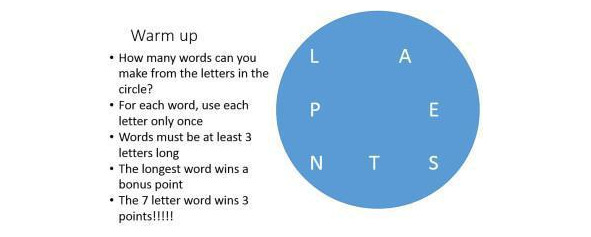
Example topic: Solar System — the planets
Check what your students know about a topic with quick fire true or false questions. However, make it more exciting. All students, stand up. If they think the answer is true, they stand on the left of the classroom. False, on the right. If they get it wrong, they are out (they sit back down). Continue until one student remains. They are the winner, reward them with… a round of applause.
This just makes warm up discussion questions more fun and mixes up speakers. Make different
corners of the room different opinions — e.g.
Stand near the door if you agree
Stand in the corner over there (point) if you strongly agree Stand near Pedro’s desk if you disagree Etc
Read a statement, students move to the relevant corner, then give them 1 or 2 minutes to discuss the statement with whoever is in the corner. If there is only one person in a particular space then you could bounce a few ideas from each corner as a class discussion, or send a student with a different opinion over to debate it. These are fun drawings that represent a word.
Example topic: technology.
Draw a few dingbats on the board. Students guess the words then guess what the theme of the lesson might be.
Matching quiz
This is a good way to introduce target language straight away. Teaching English Grammar (Scrivener) gives plenty of examples for how to present target language, I recommend taking a look



(smart phone)
Example topic: crime and punishment
Q1: Do you agree with the death penalty?
Q2: «life means life’. What does this refer to, and do you agree?
Etc.
Bring in objects in a «santa’s sack’. Put the sack on the table. Allows certain students to feel the objects through the sack. They work with a partner/team to guess the objects and the common theme between each object.
This can be done in many ways, but a good one is by providing a short text where the target word is missing, and has been replaced with the word «Coffeepot’. Students guess the correct word
Example topic: television
Coffeepot was invented in the 1920s, but became popular after World War 2. At first, coffeepots were black and white, but then it changed to colour. Coffeepot is a form of entertainment. These days, almost every household has a coffeepot. (etc…)
Again the target word has been replaced by the word «Coffeepot’. Students ask questions to help guess what word «Coffeepot’ actually is…
Example topic: MacDonalds
Student: is coffeepot a noun?
Teacher: yes…
Student: can coffeepot be a verb too?
Teacher: no
Student: is coffeepot an object?
Teacher: well, you can have a coffeepot, yes.
Student: is it a place?
Teacher: is what a place?
Student: sorry, is coffeepot a place?
Etc…
Complete the dialogue (similar to «what are they saying’!)
Put pictures on the board of random interactions between people. Have students create suitable dialogues. Choose pictures that will direct to the topic…
Example topic: how and when to apologise
Бесплатный фрагмент закончился.
Купите книгу, чтобы продолжить чтение.
